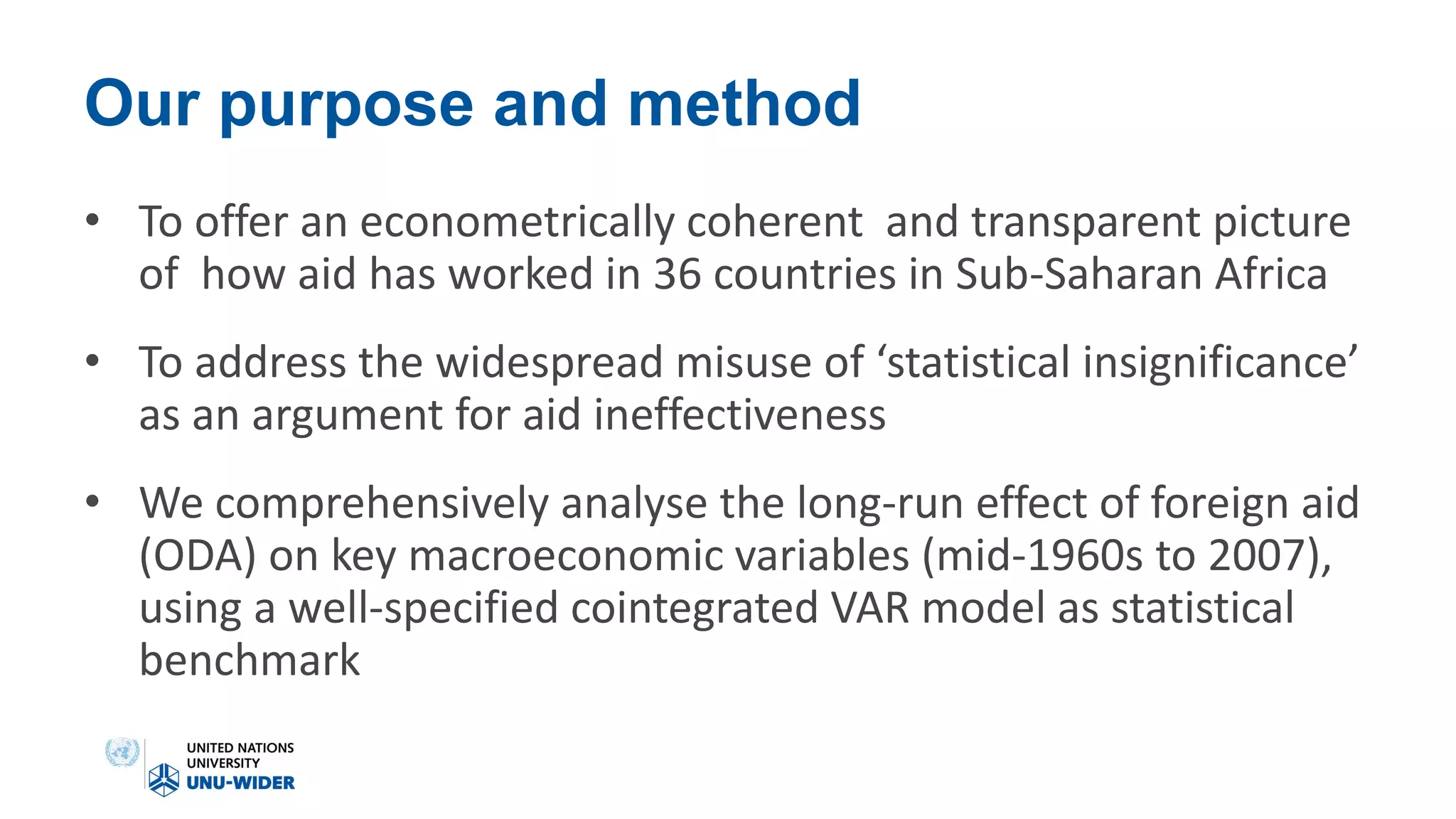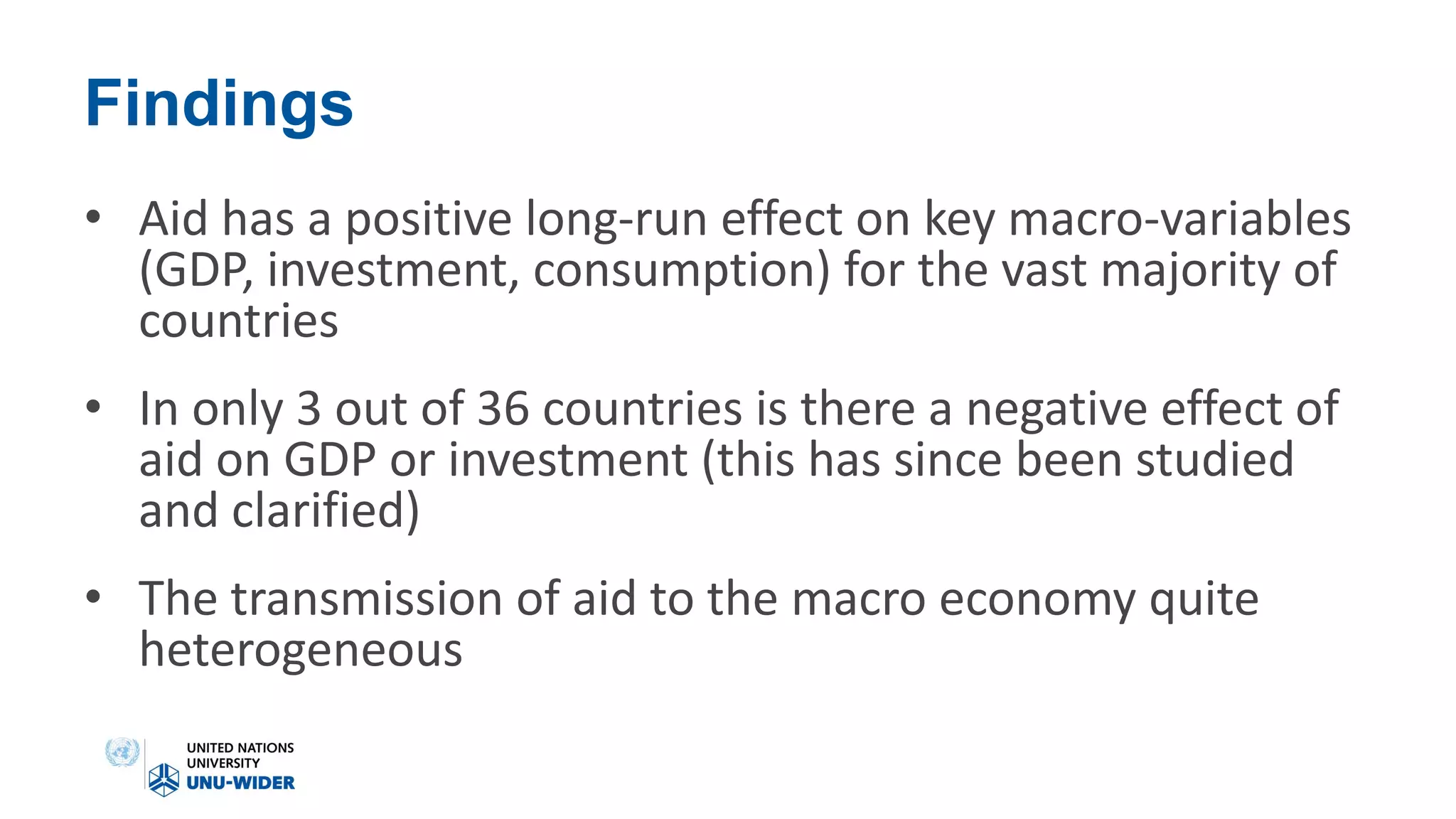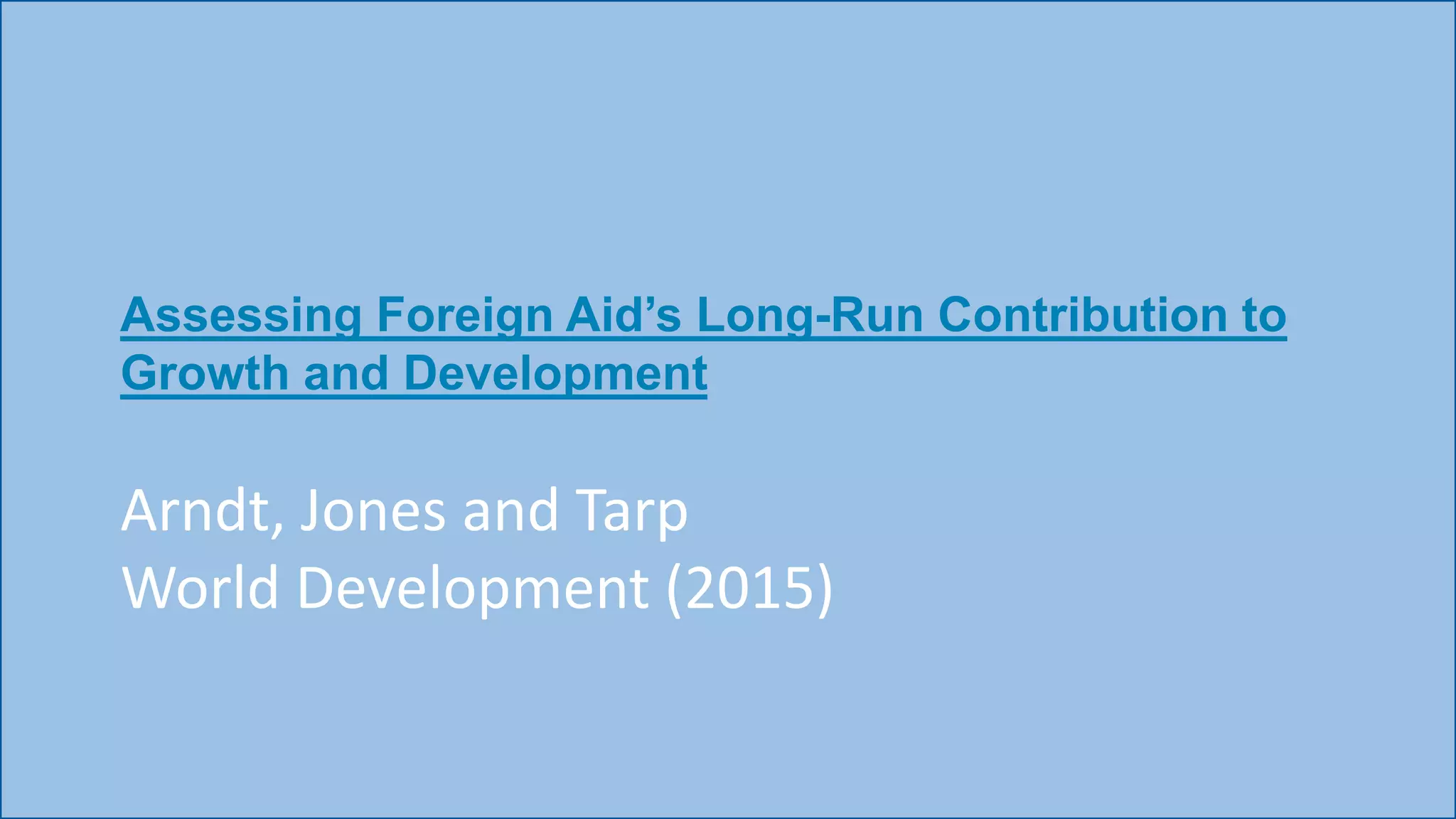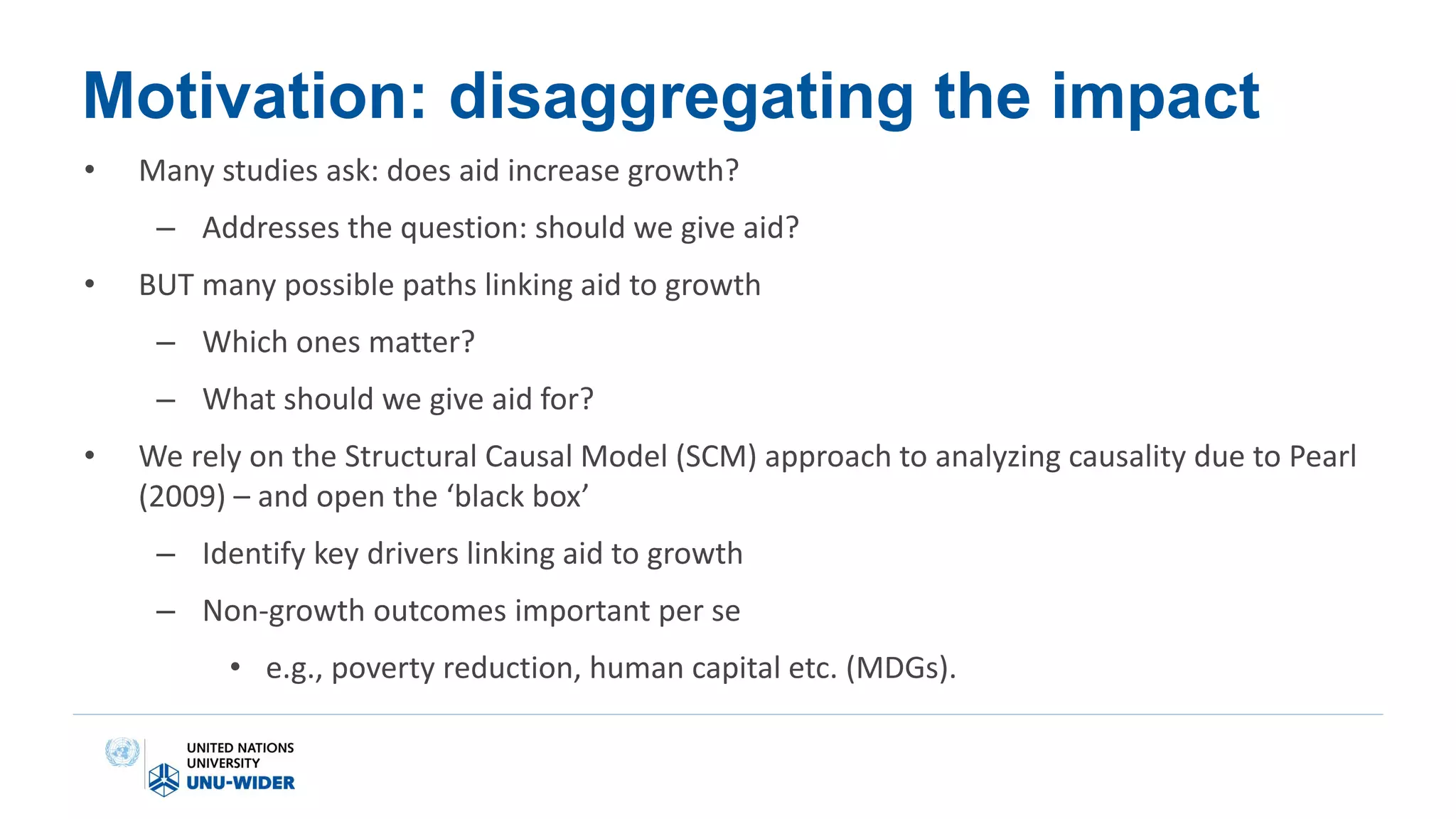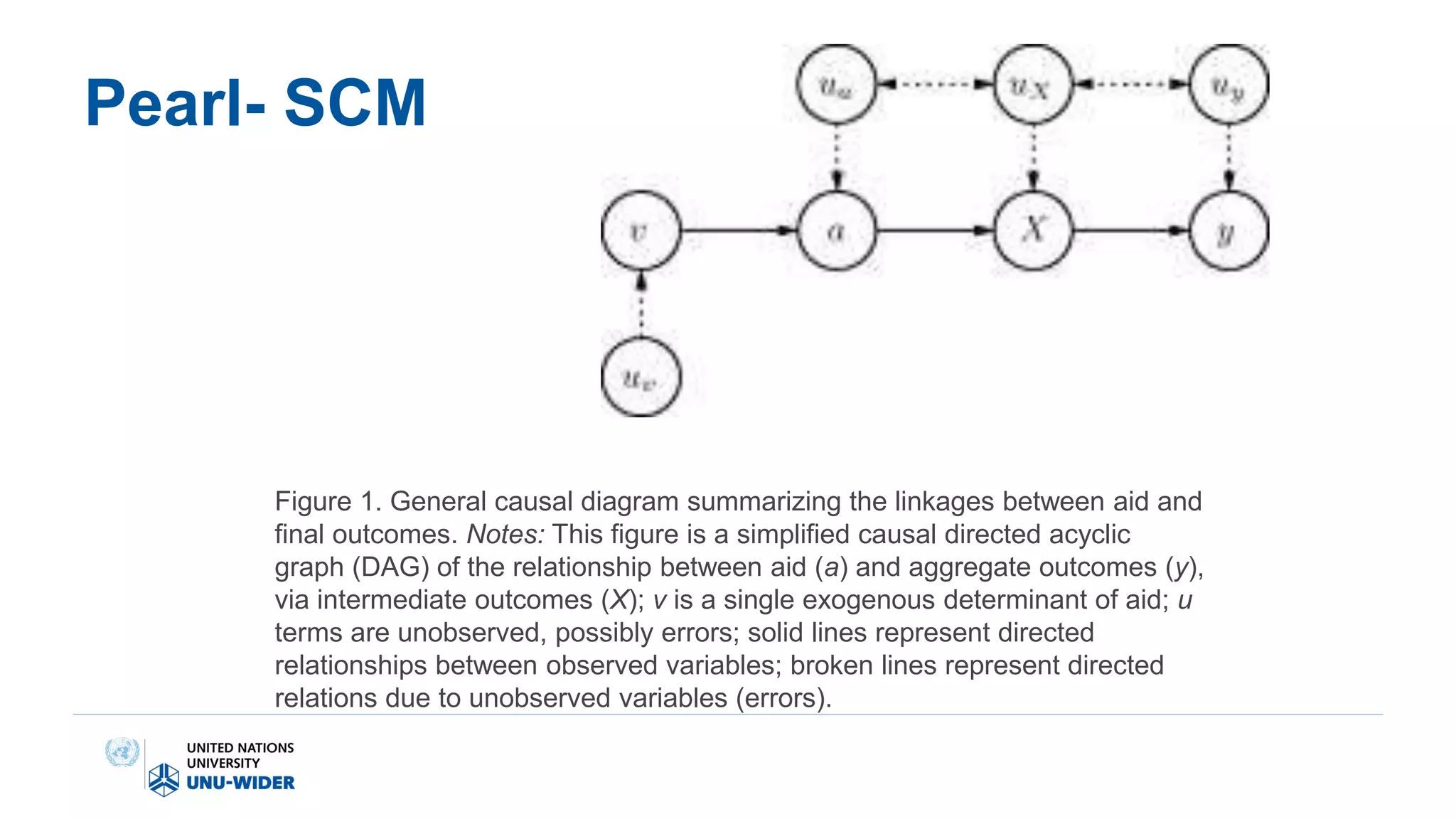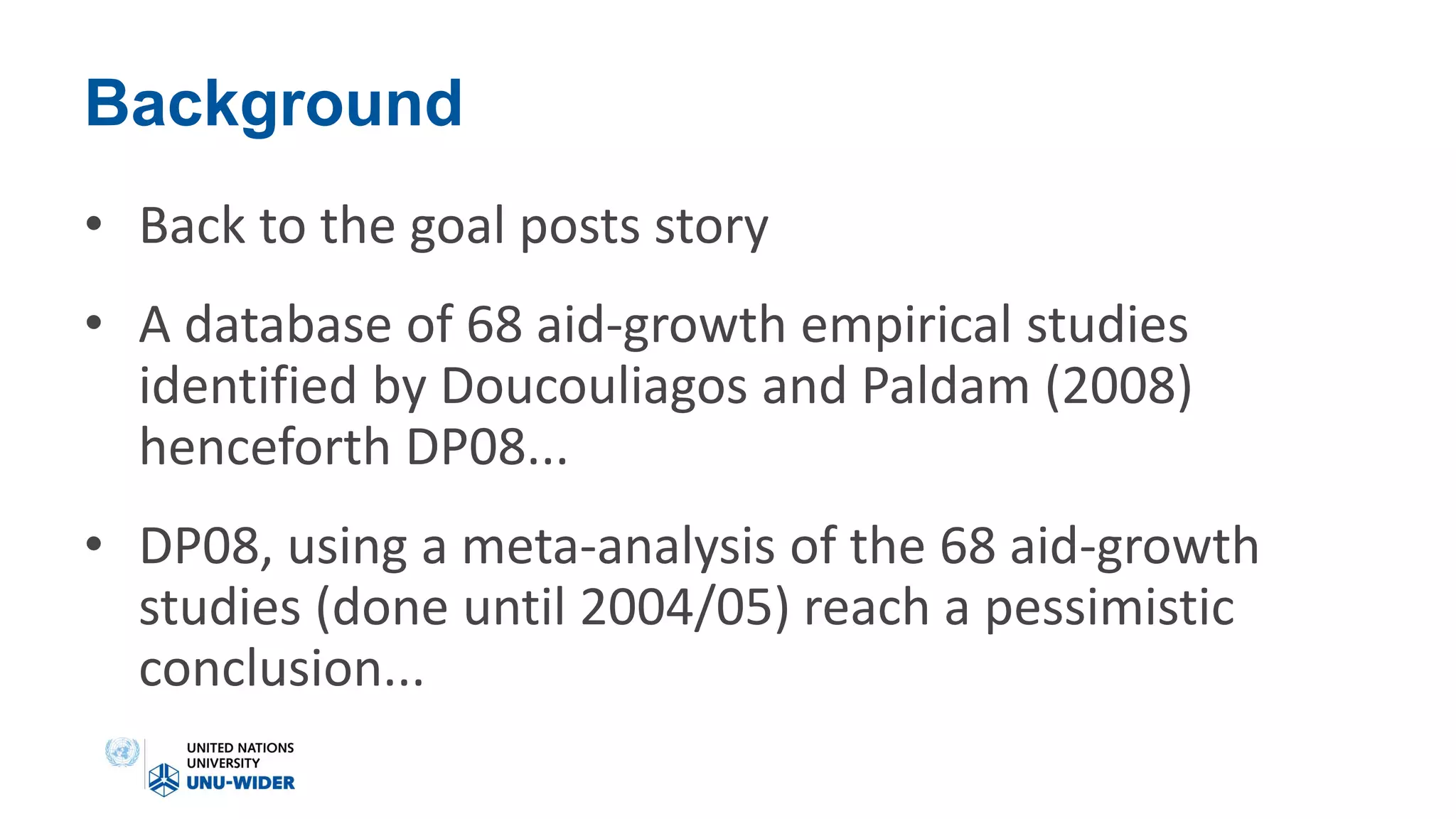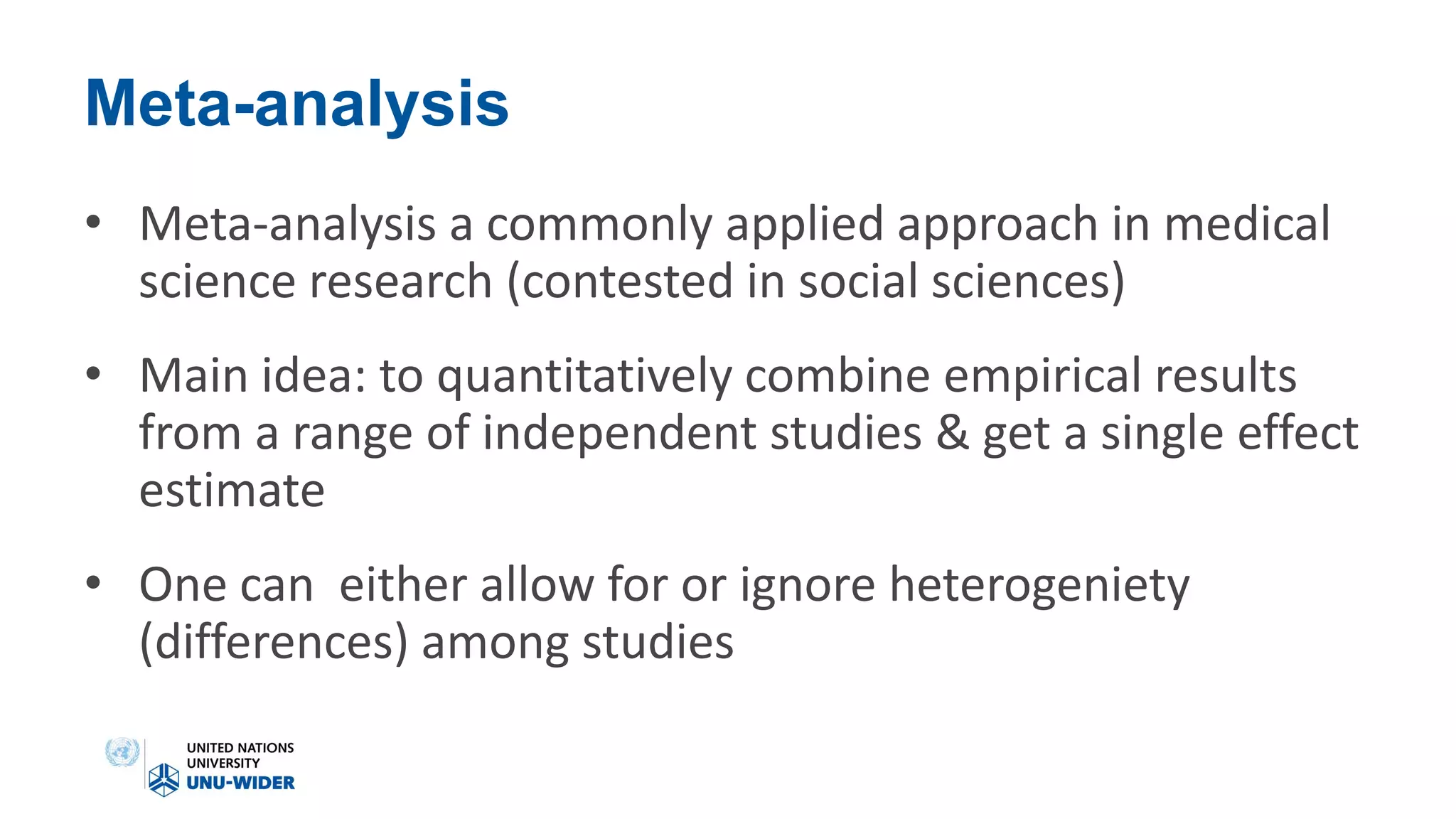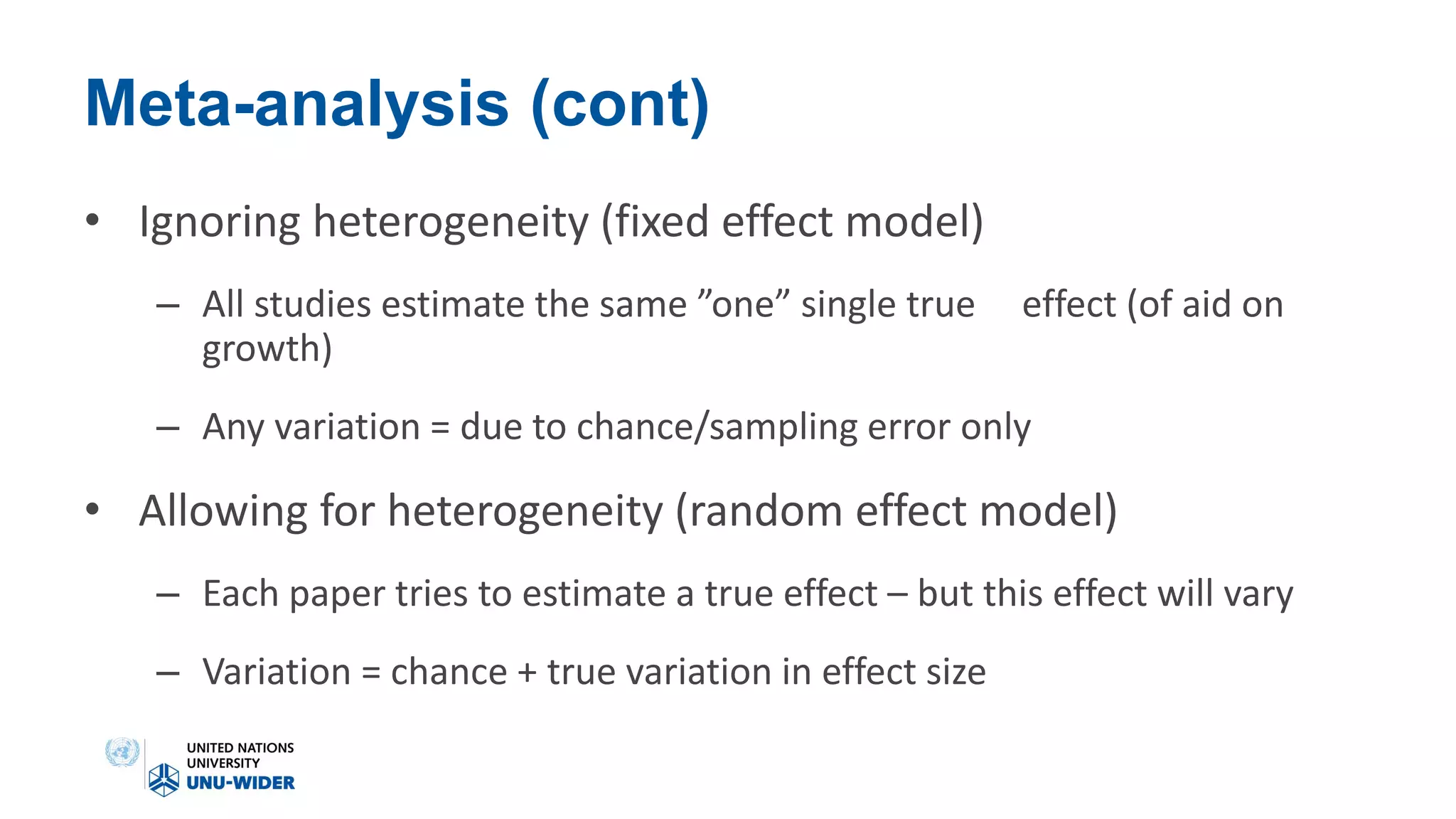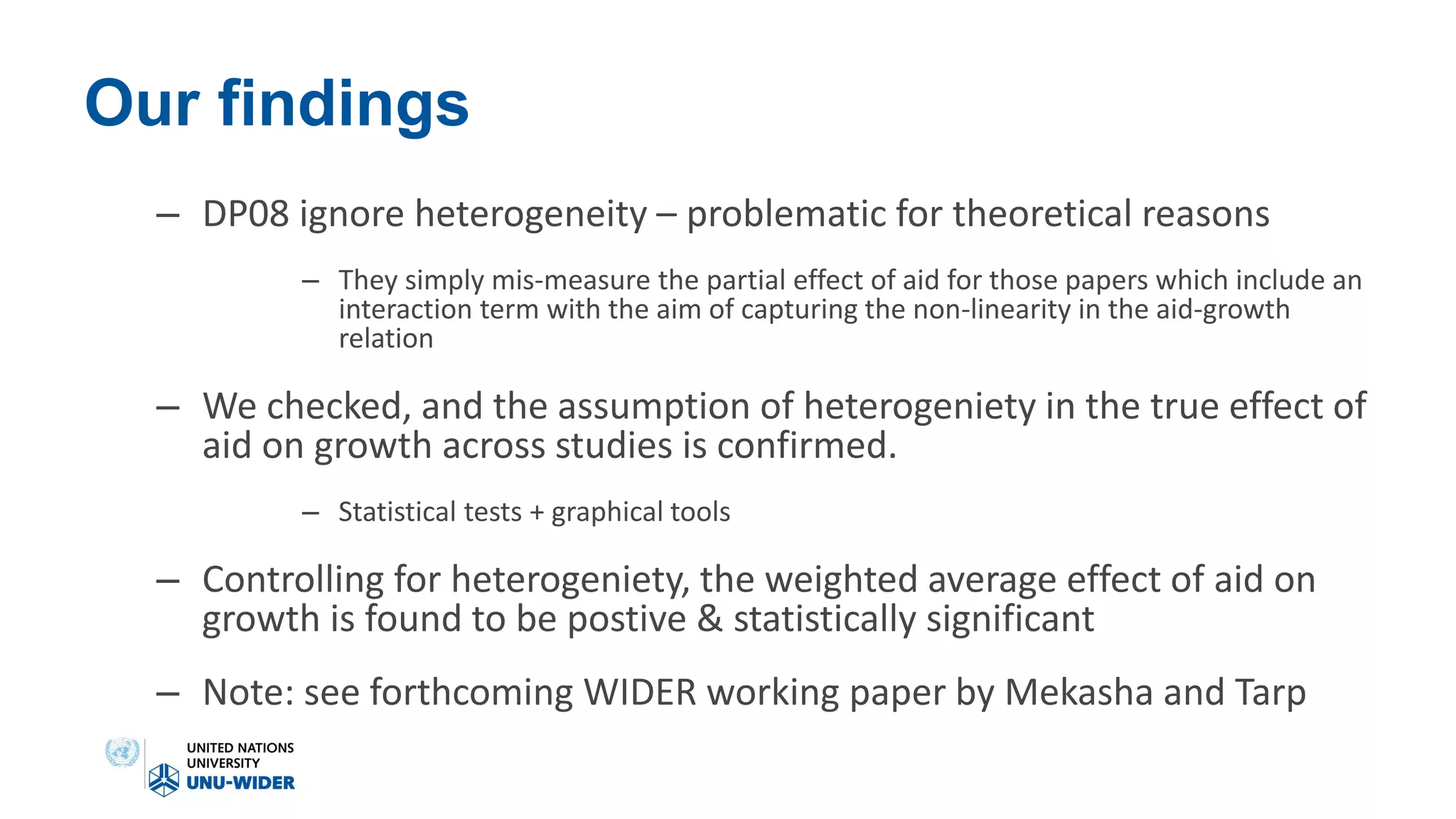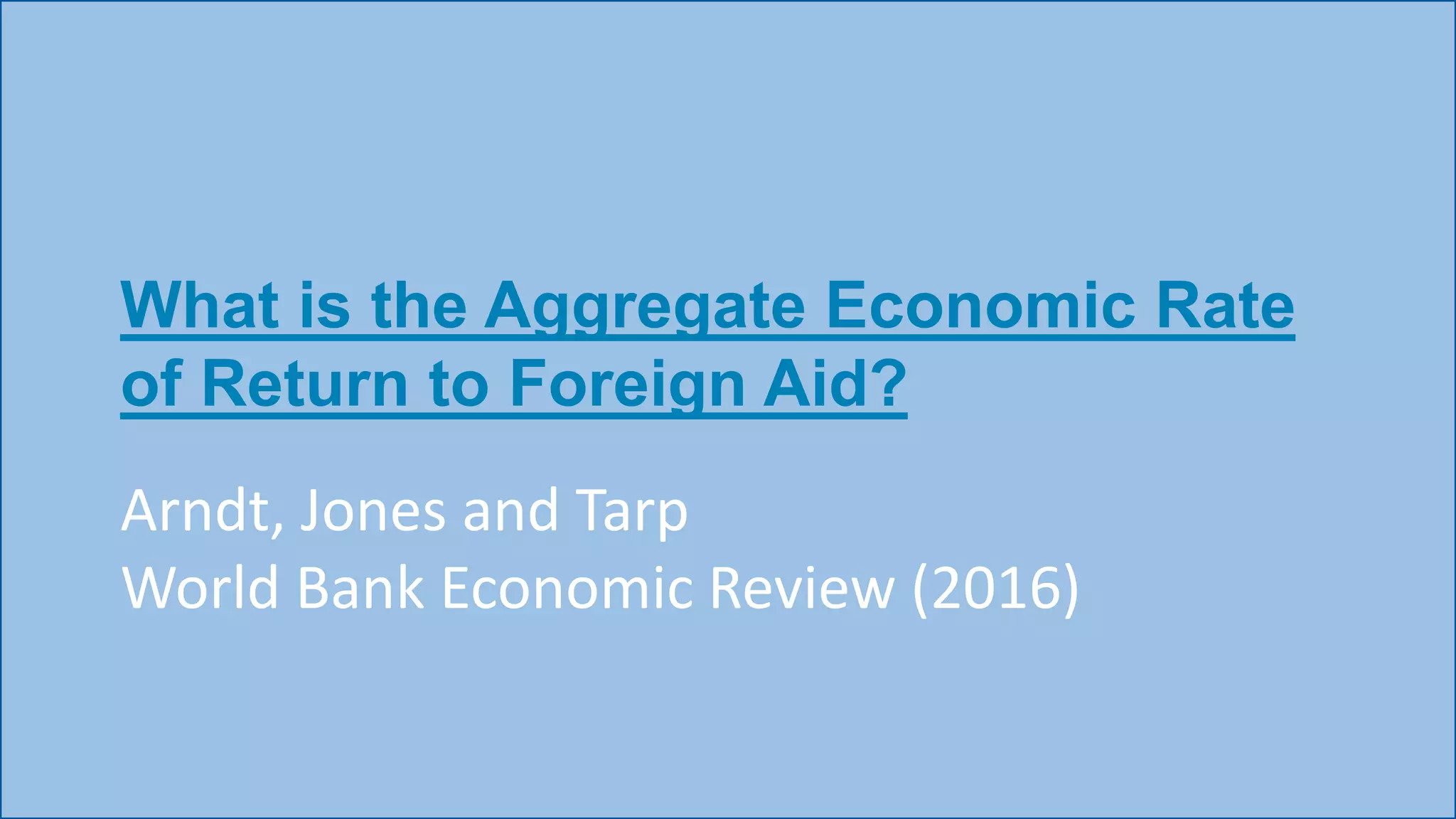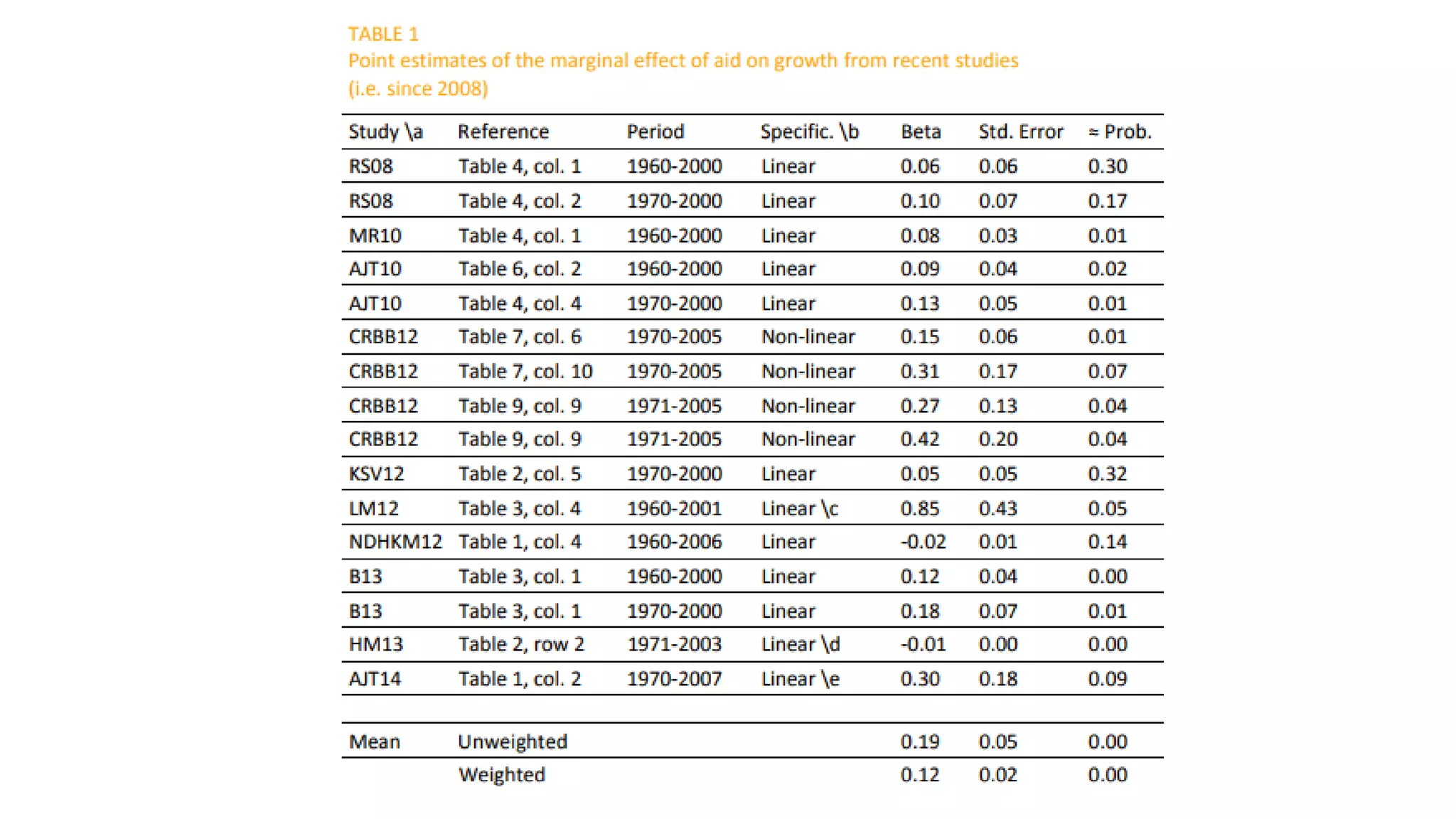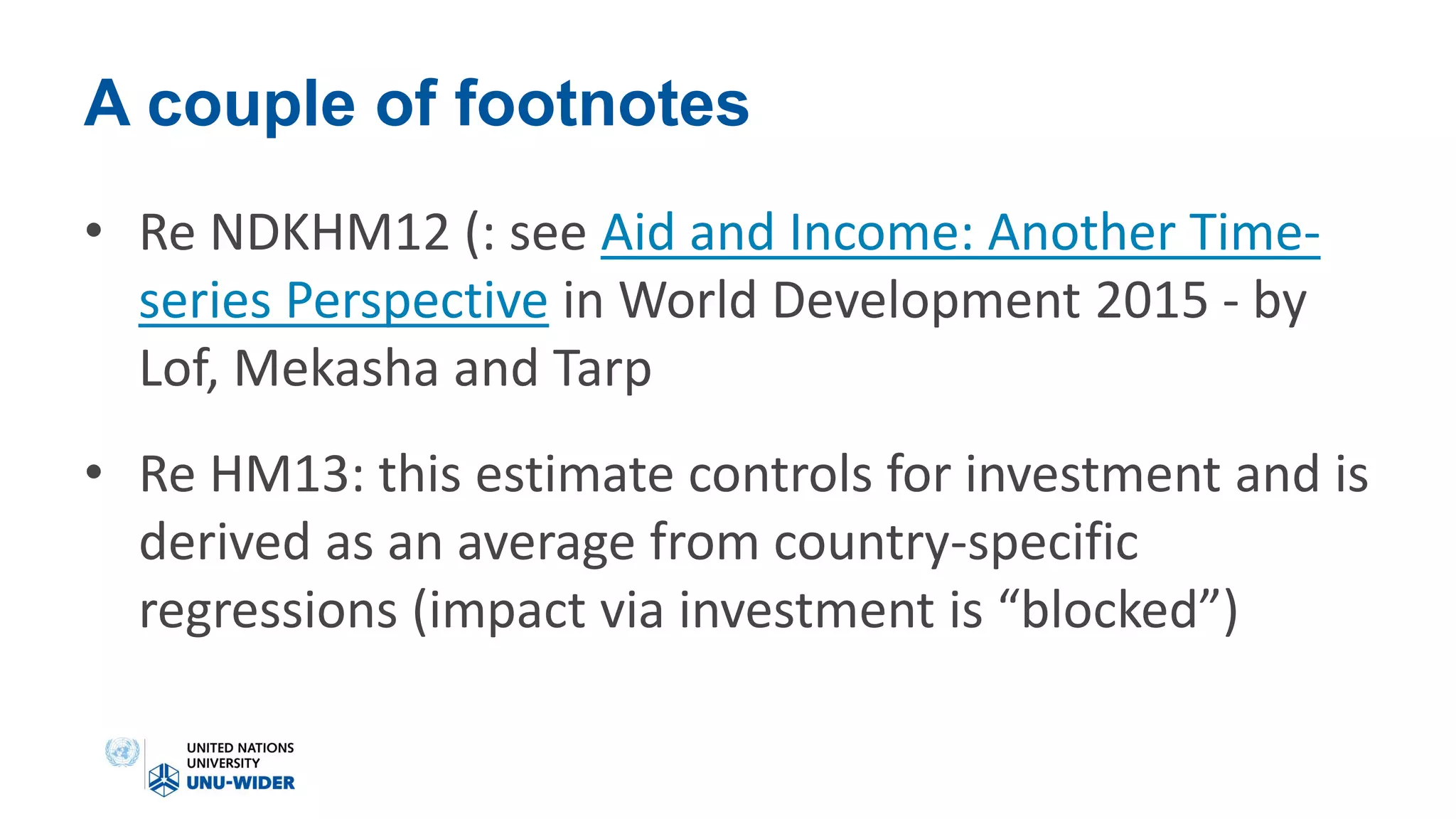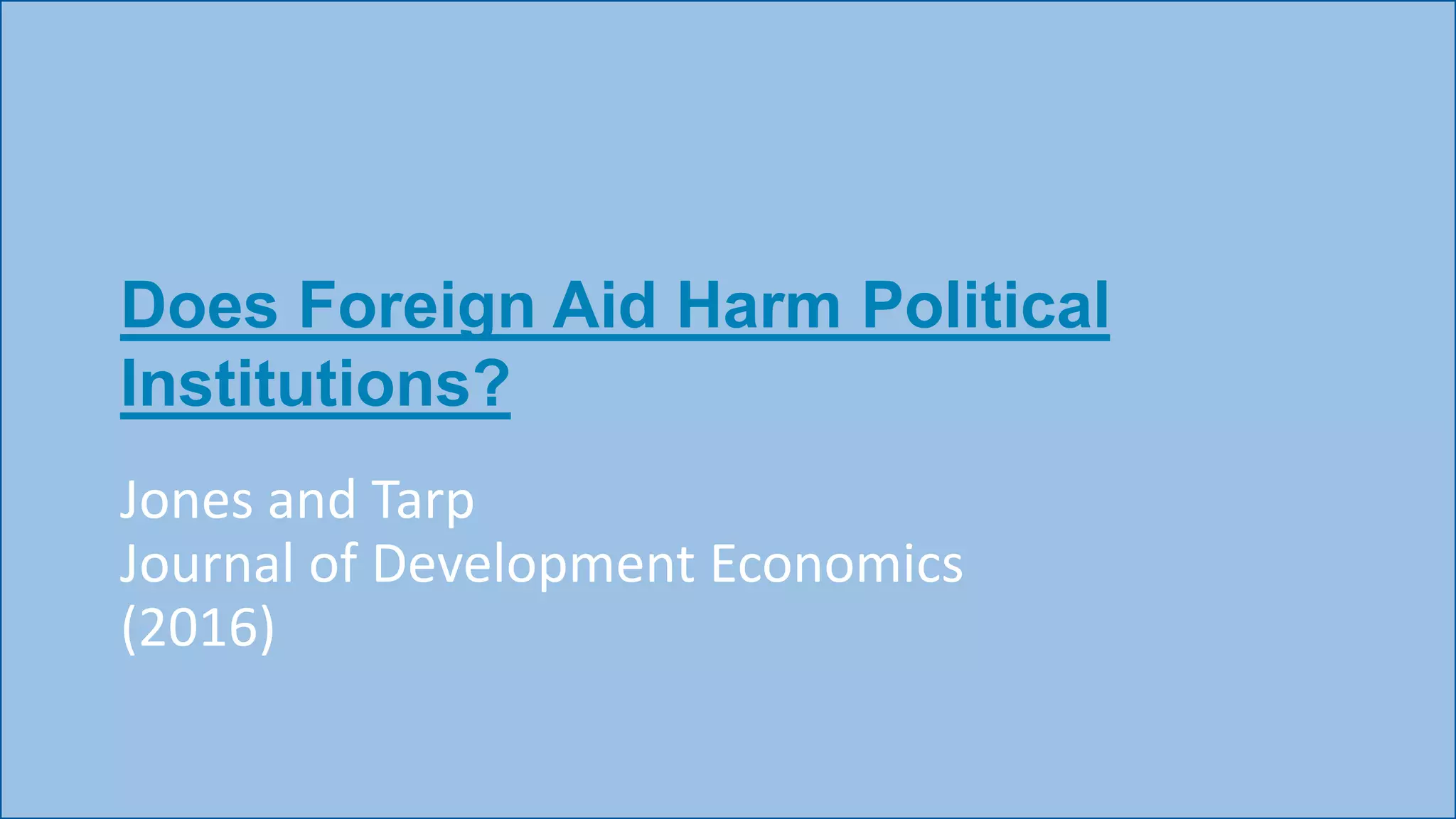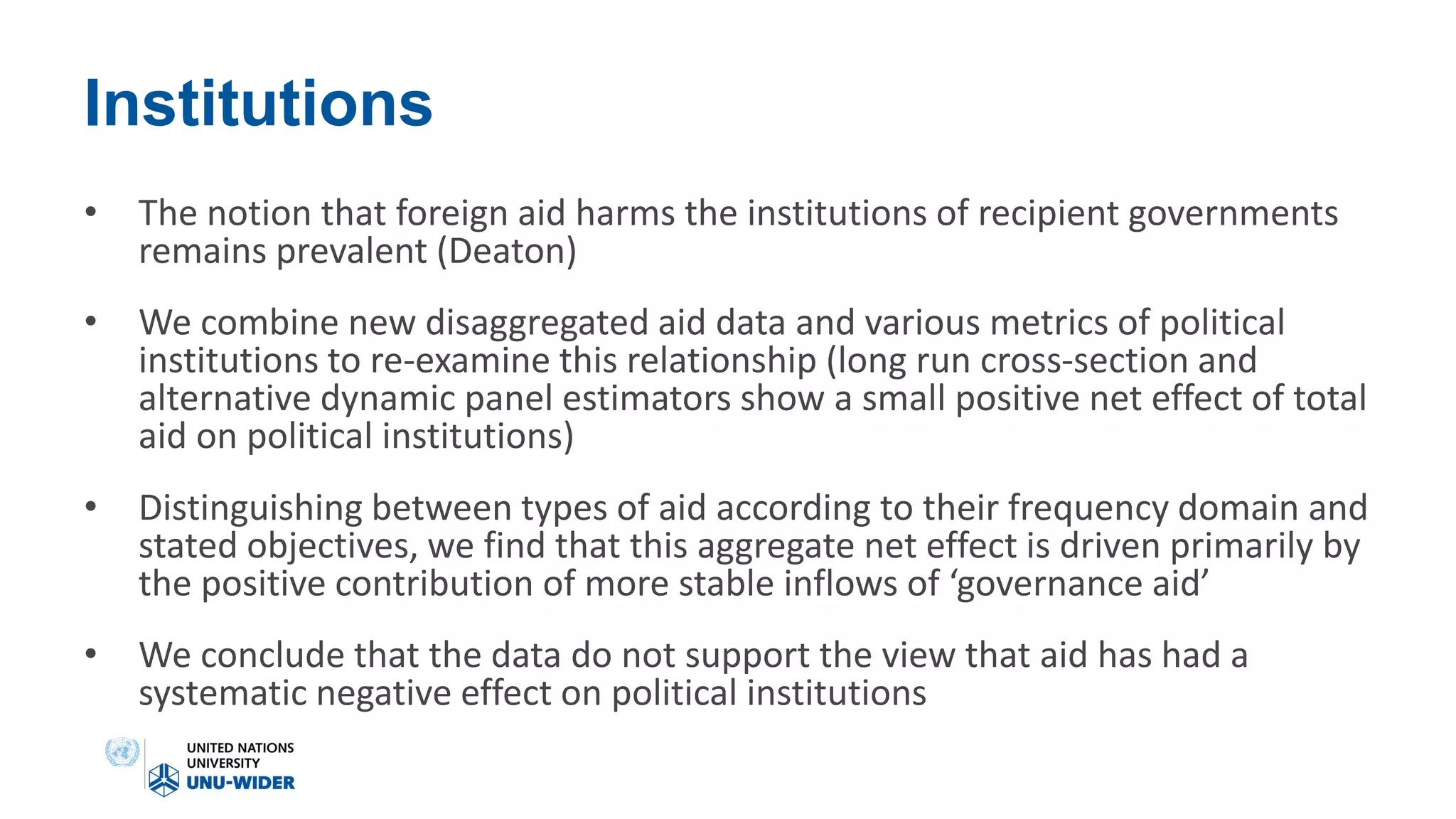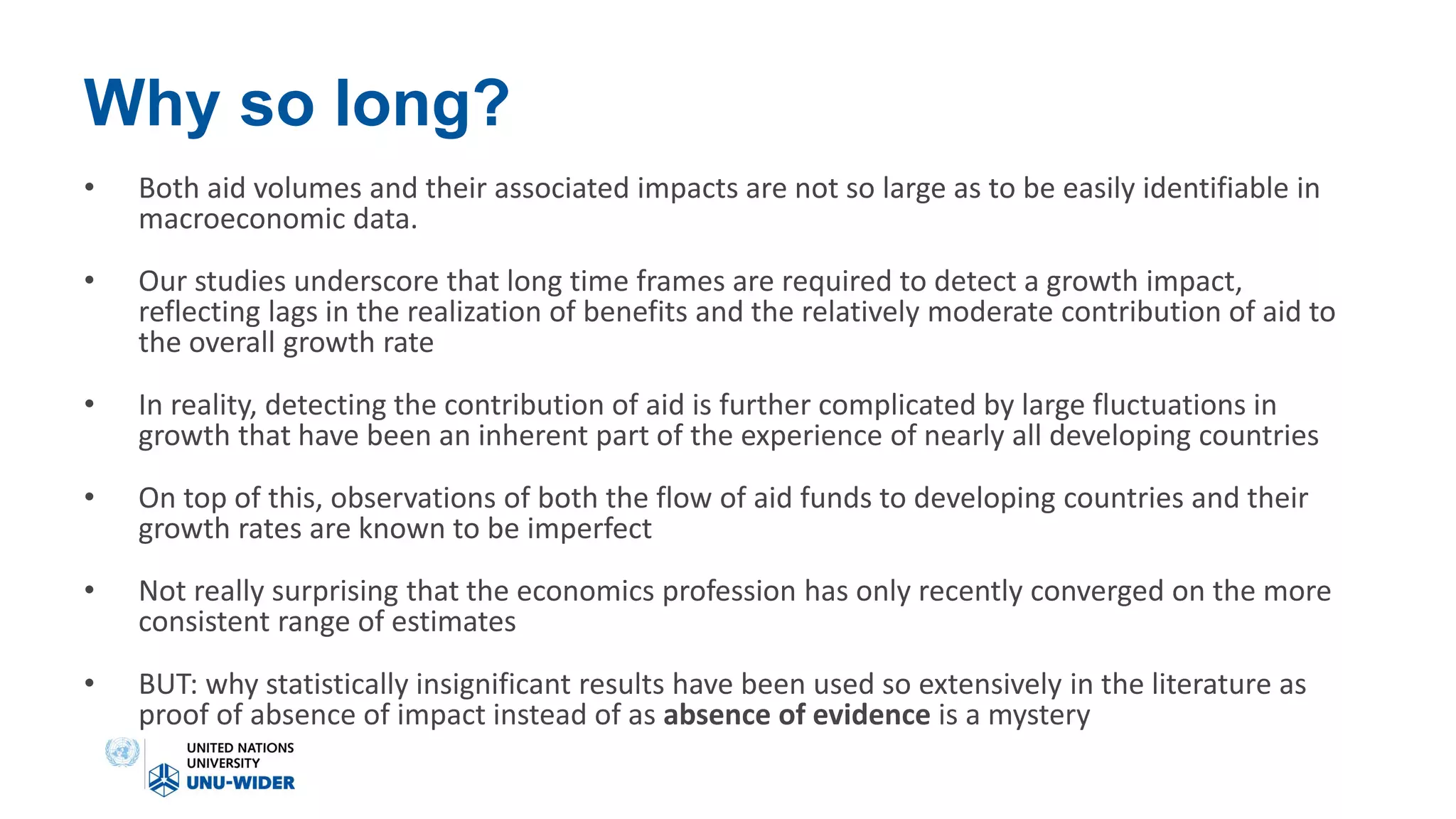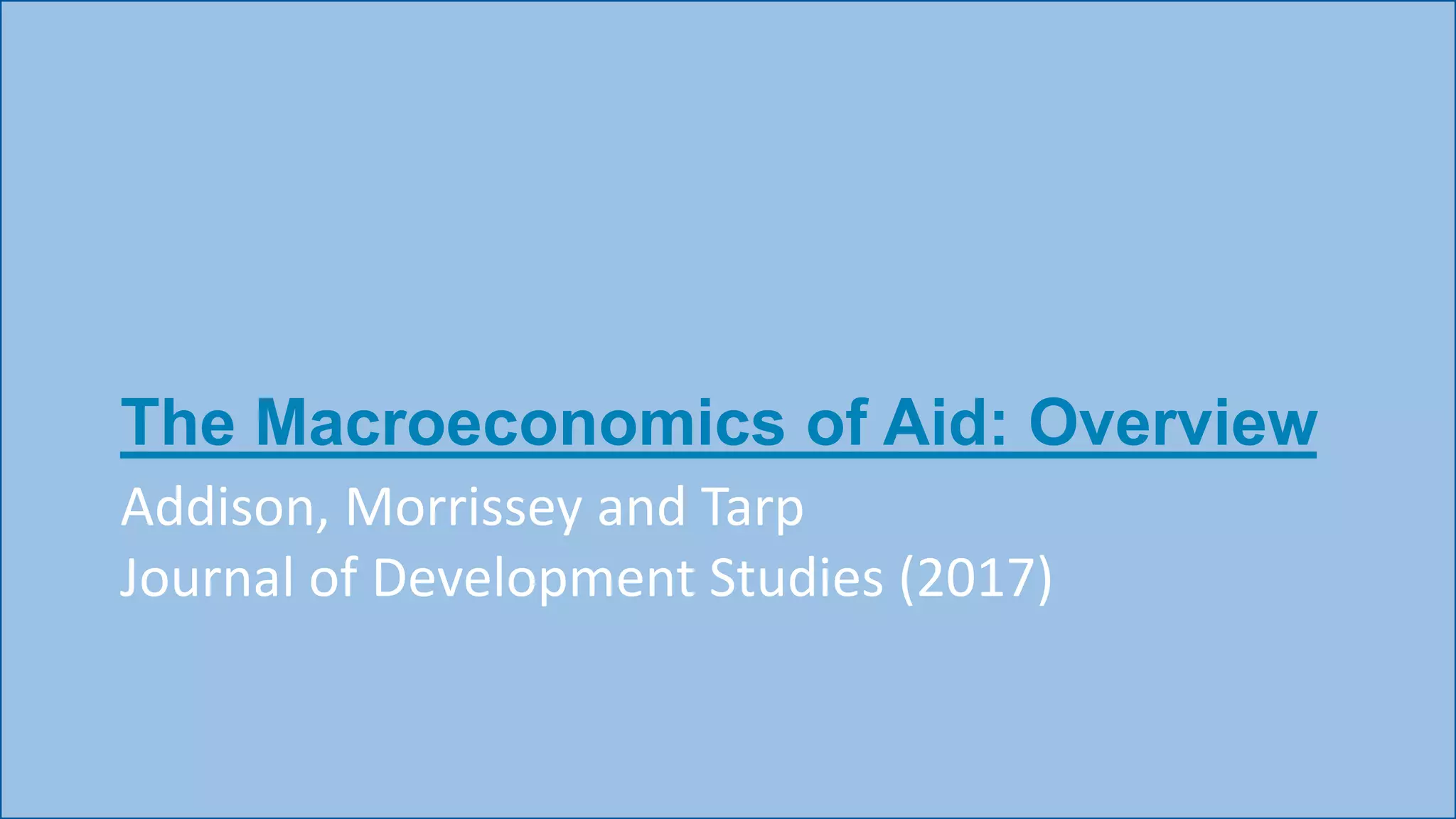The document discusses the contentious effectiveness of foreign aid in promoting economic growth in developing countries, highlighting various interpretations and debates in both academic and popular literature. It traces the evolution of empirical research on this topic through different generations, noting significant methodological challenges and the impact of aid on macroeconomic variables over time. Despite skepticism from some quarters, recent findings indicate a generally positive long-run effect of aid on growth, although the relationship is complicated and varies by context.
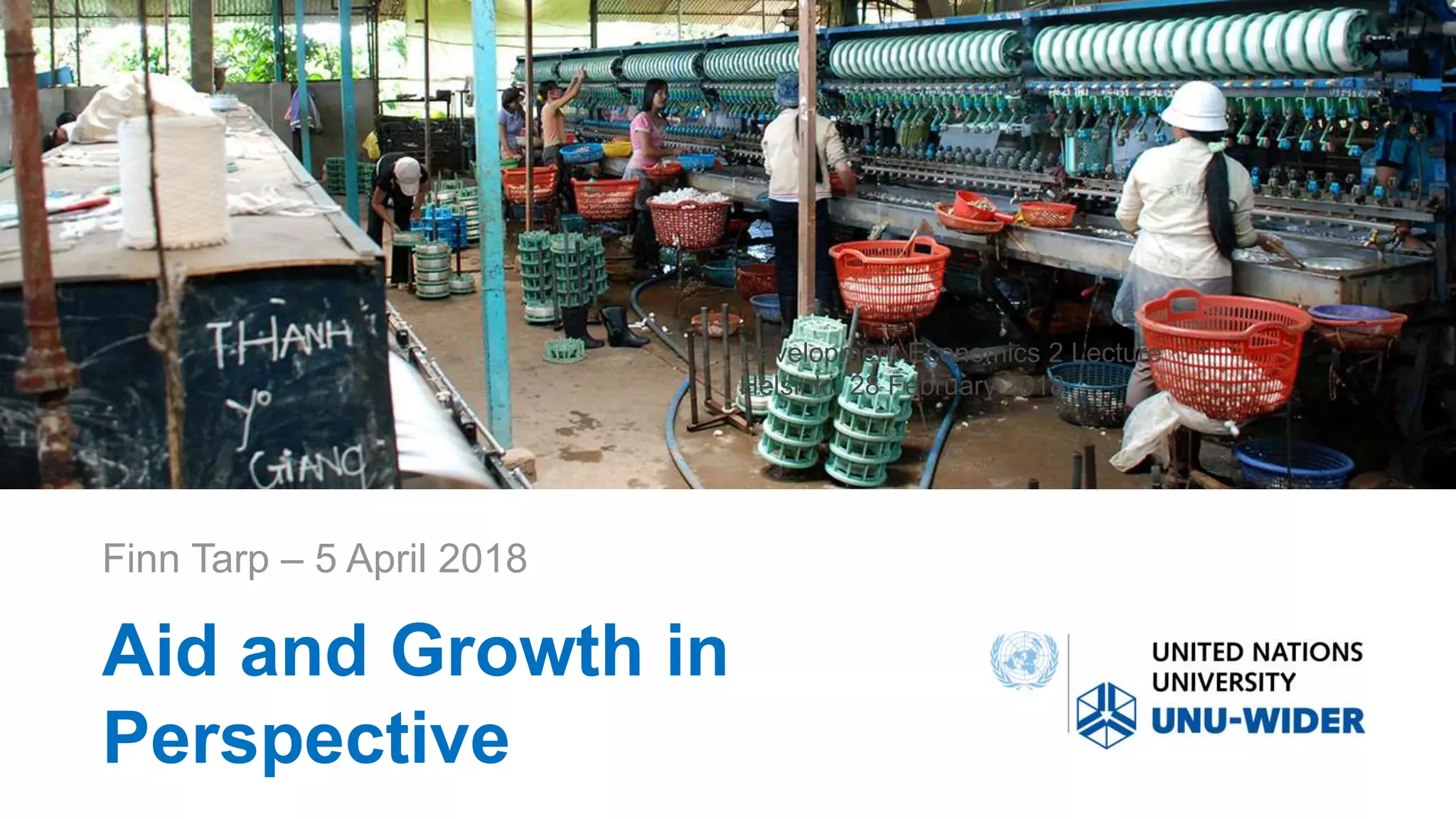

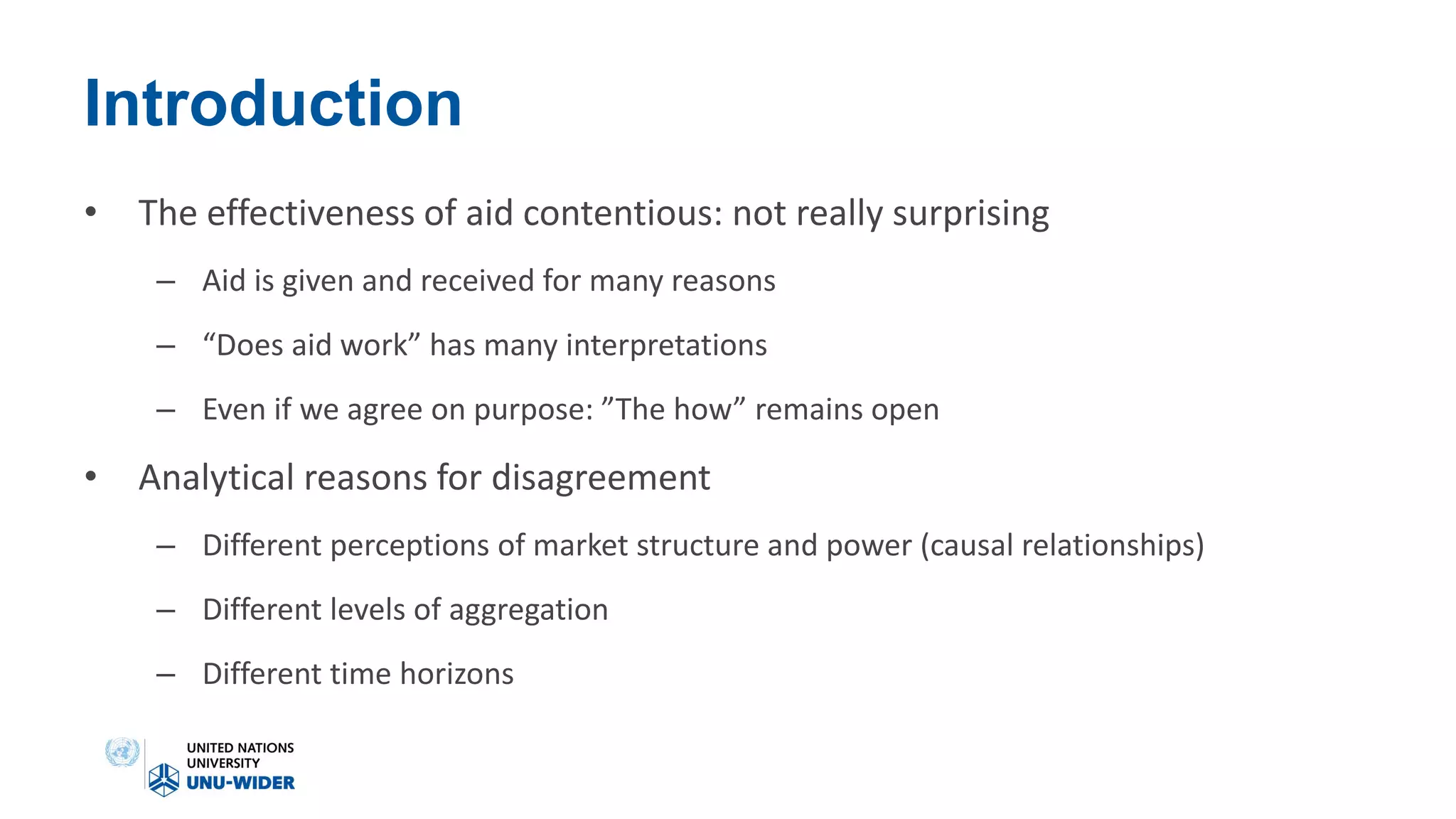
![One key question of interest
• Does foreign aid boost economic growth on average in developing
countries?
• Much debated both in the academic and popular literature
• “The notion that aid can alleviate systemic poverty, and has done so, is a myth.
Millions in Africa are poorer today because of aid; misery and poverty have not
ended but have increased.”
(Dambisa Moyo, 2009)
• “A reasonable estimate is that over the last thirty years [aid] has added around one
percentage point to the annual growth rate of the bottom billion.”
(Paul Collier, 2007)](https://image.slidesharecdn.com/lecturesorbonne05042018finntarp-180405114929/75/Aid-and-Growth-in-Perspective-Lecture-by-Finn-Tarp-4-2048.jpg)
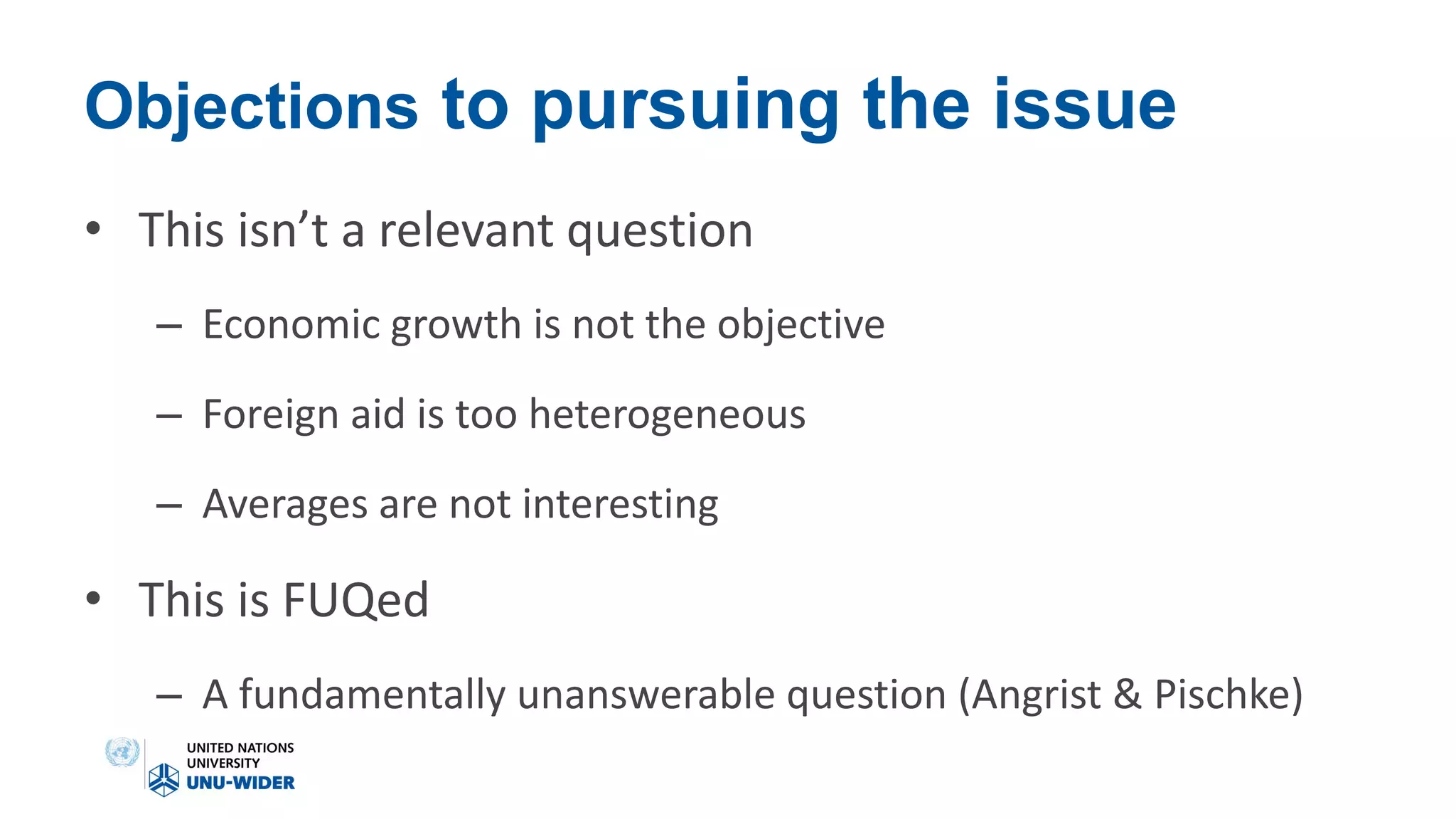

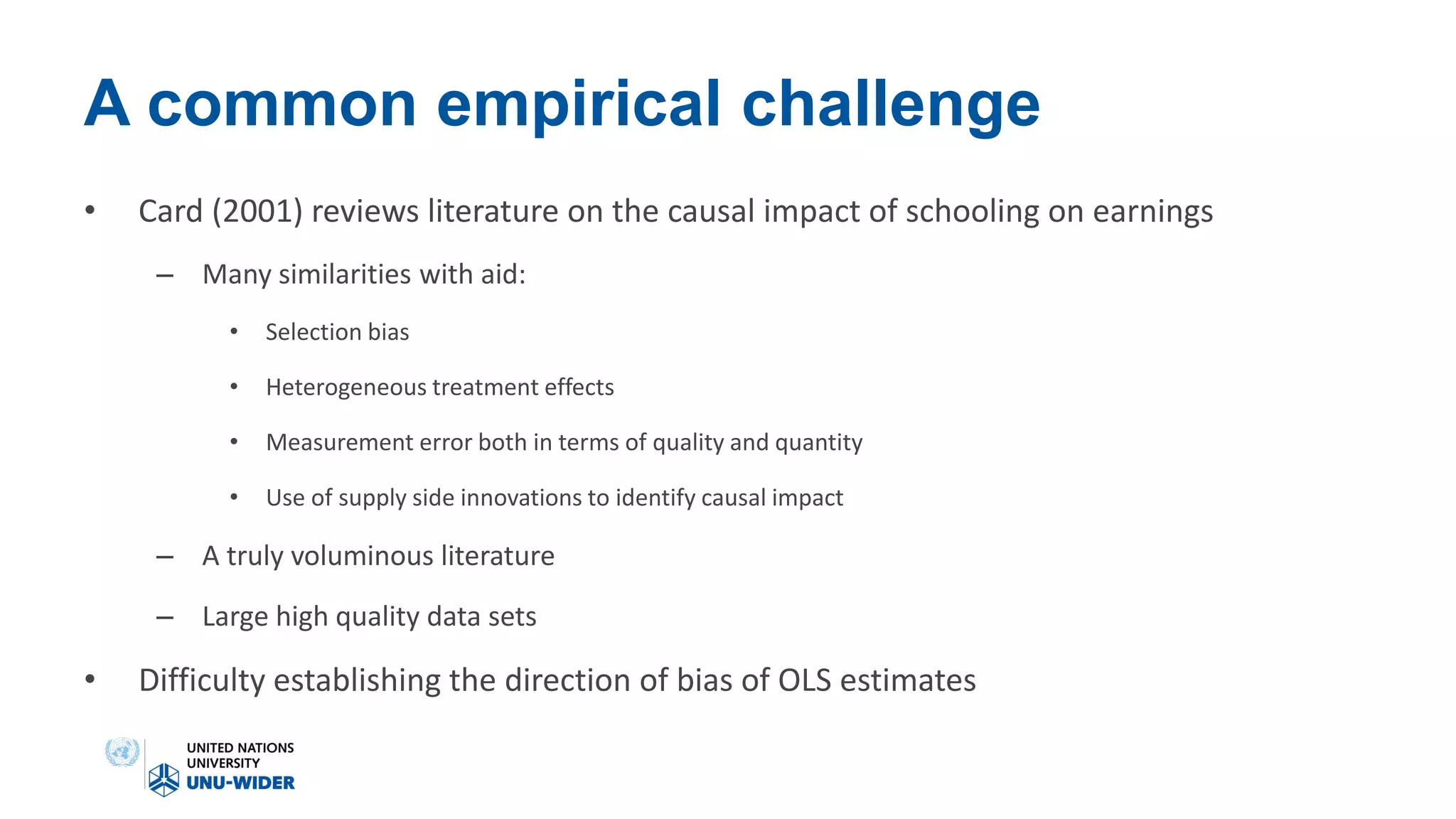
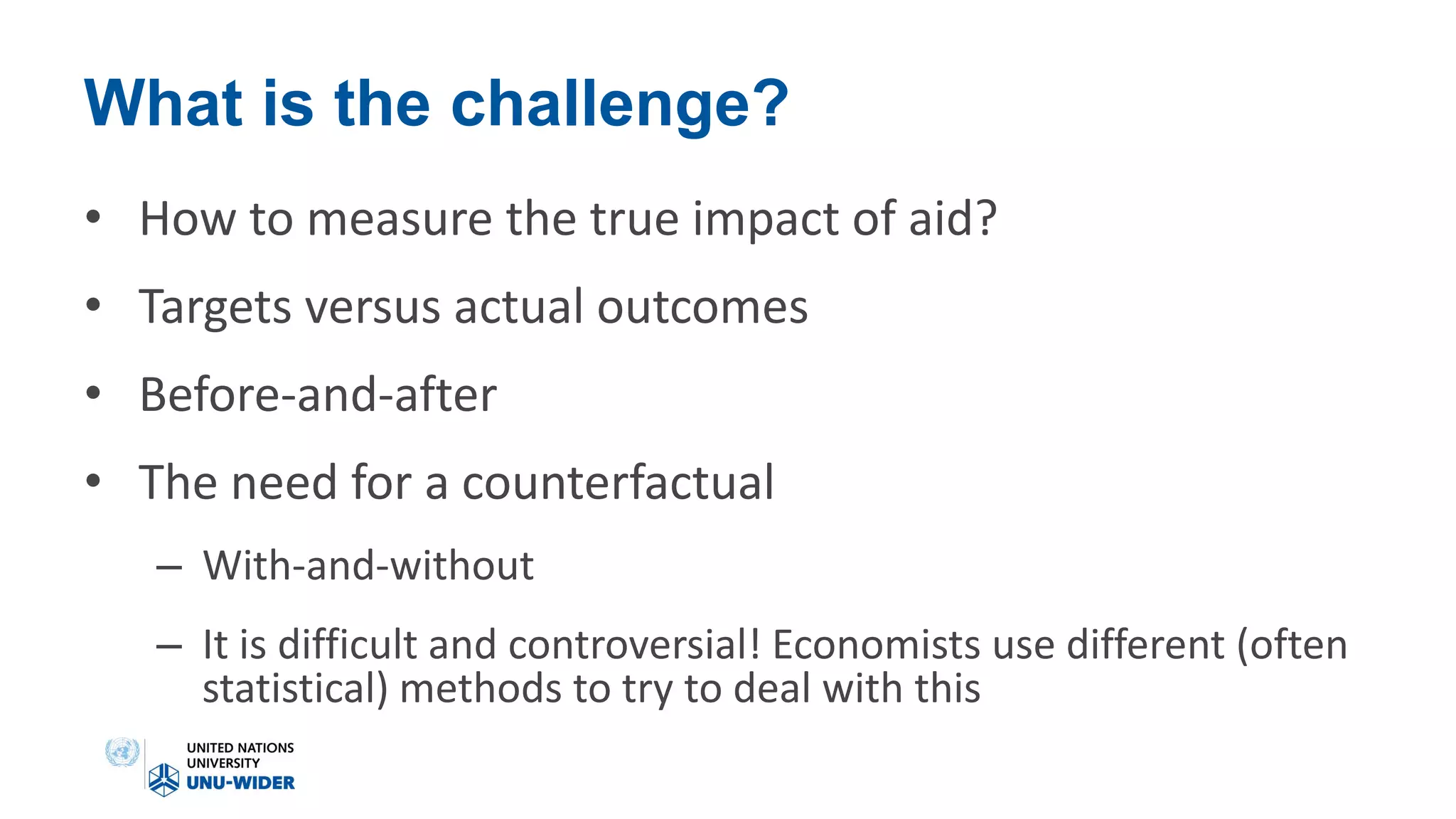
![So, many objections to pursuing the
issue: but…..
– My view: Profound dangers involved if the economics
profession and more broadly social sciences fenced off the
question (would leave the field open to unhelpful rhetoric…)
– And existing macro-lessons and insights spanning >50 years do
merit attention when one looks carefully at the accumulated
evidence
– Alongside insights from micro- and meso-level studies [not in
focus here – but generally positive]](https://image.slidesharecdn.com/lecturesorbonne05042018finntarp-180405114929/75/Aid-and-Growth-in-Perspective-Lecture-by-Finn-Tarp-9-2048.jpg)
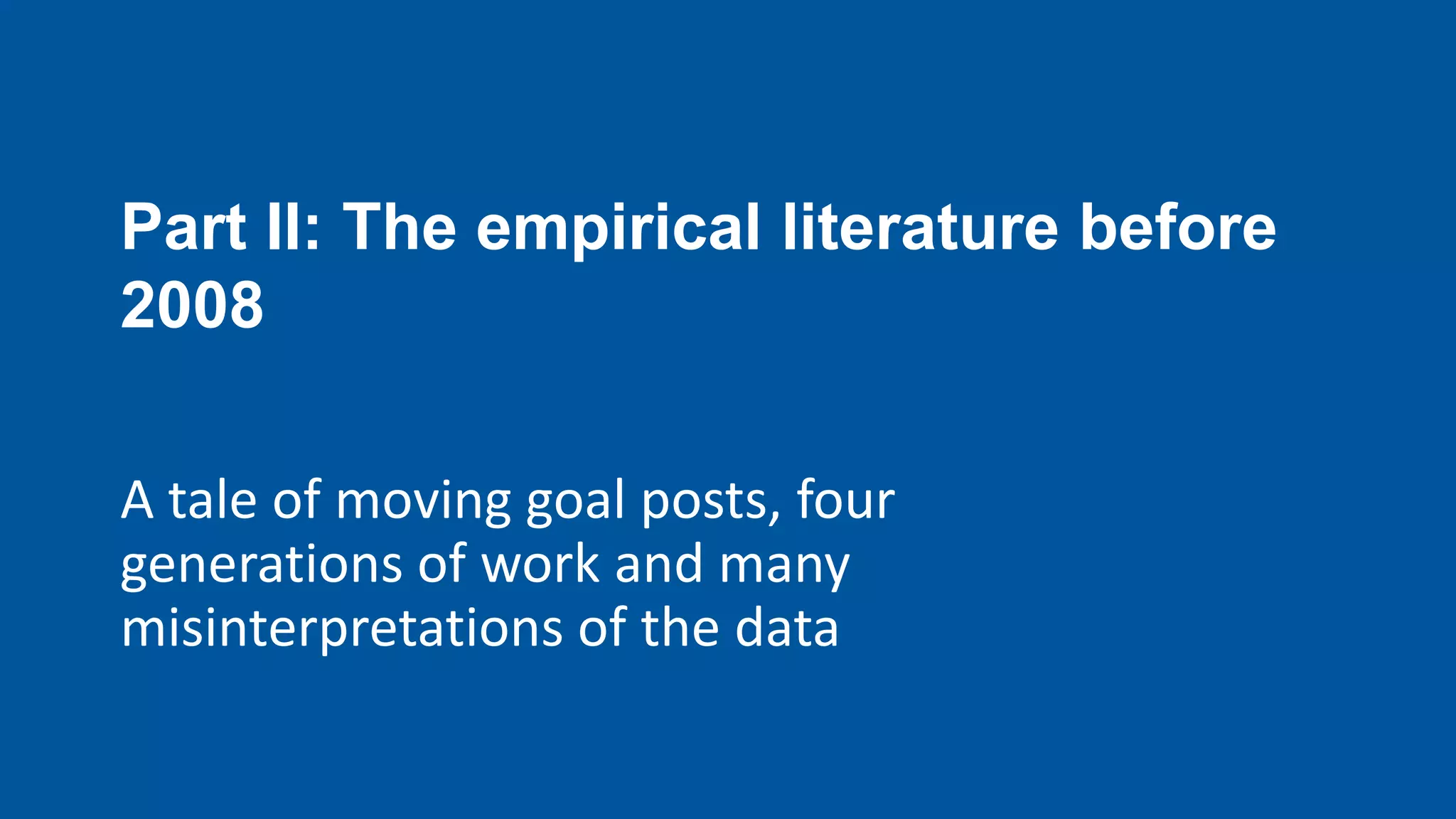

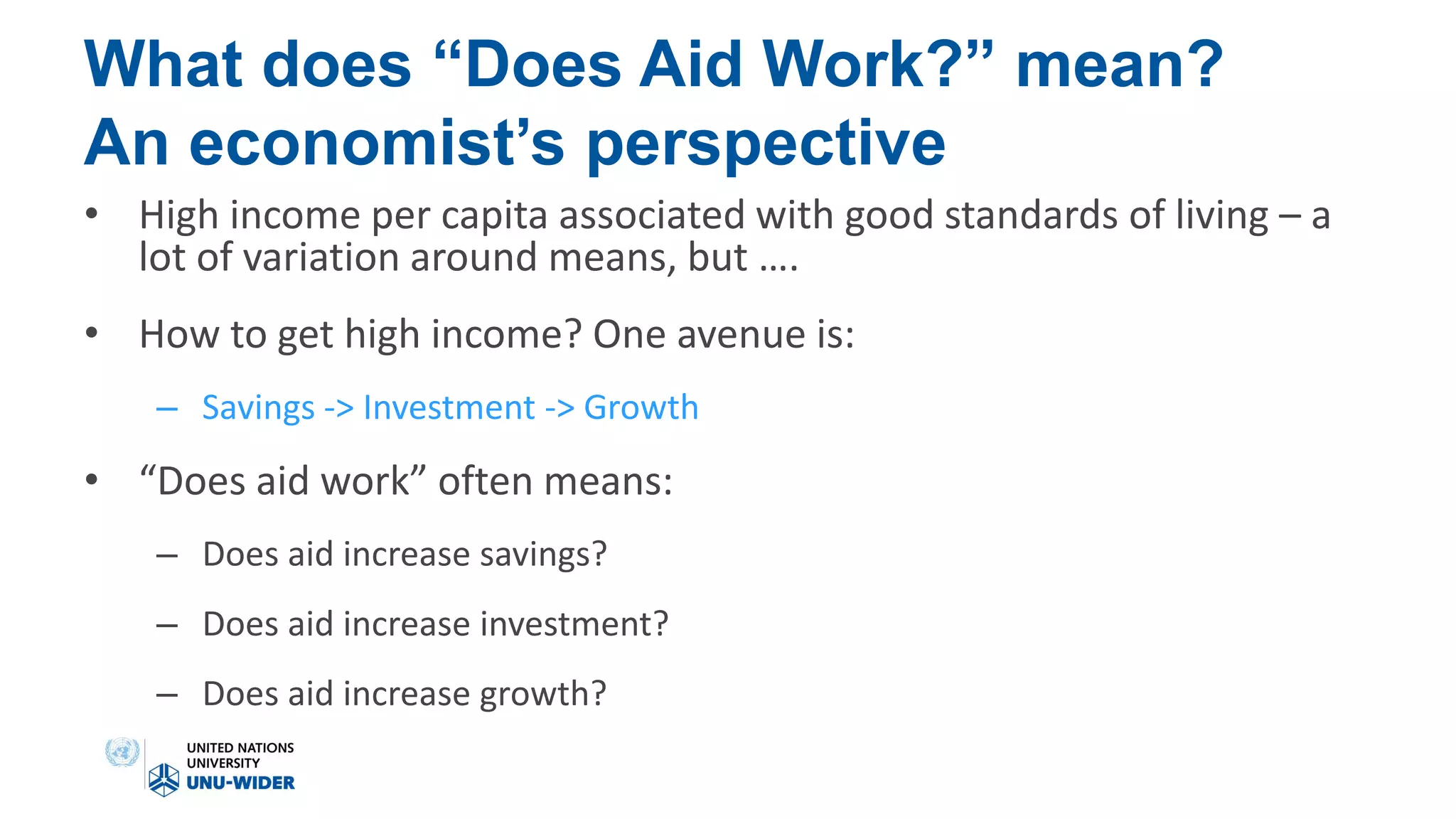
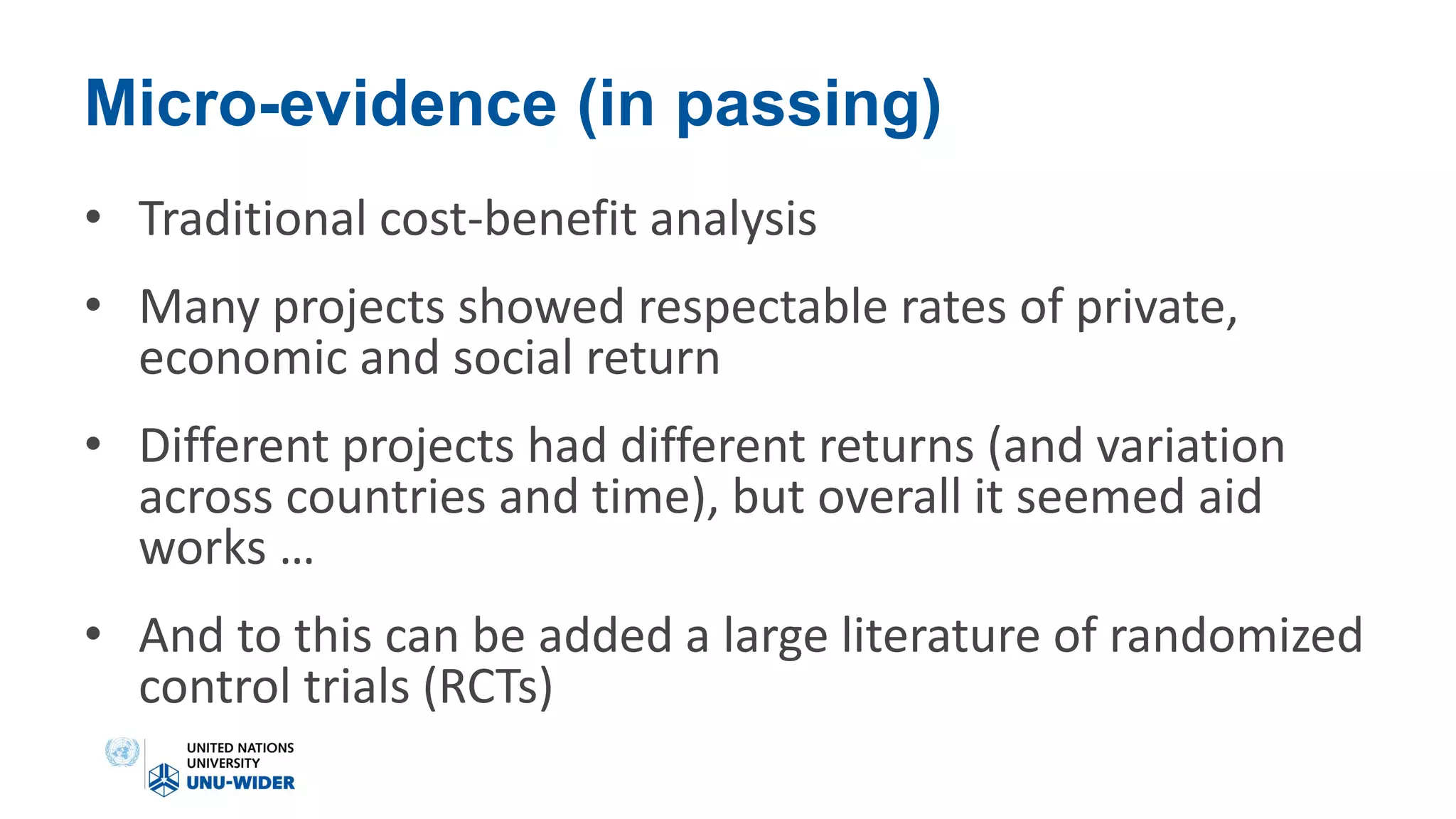
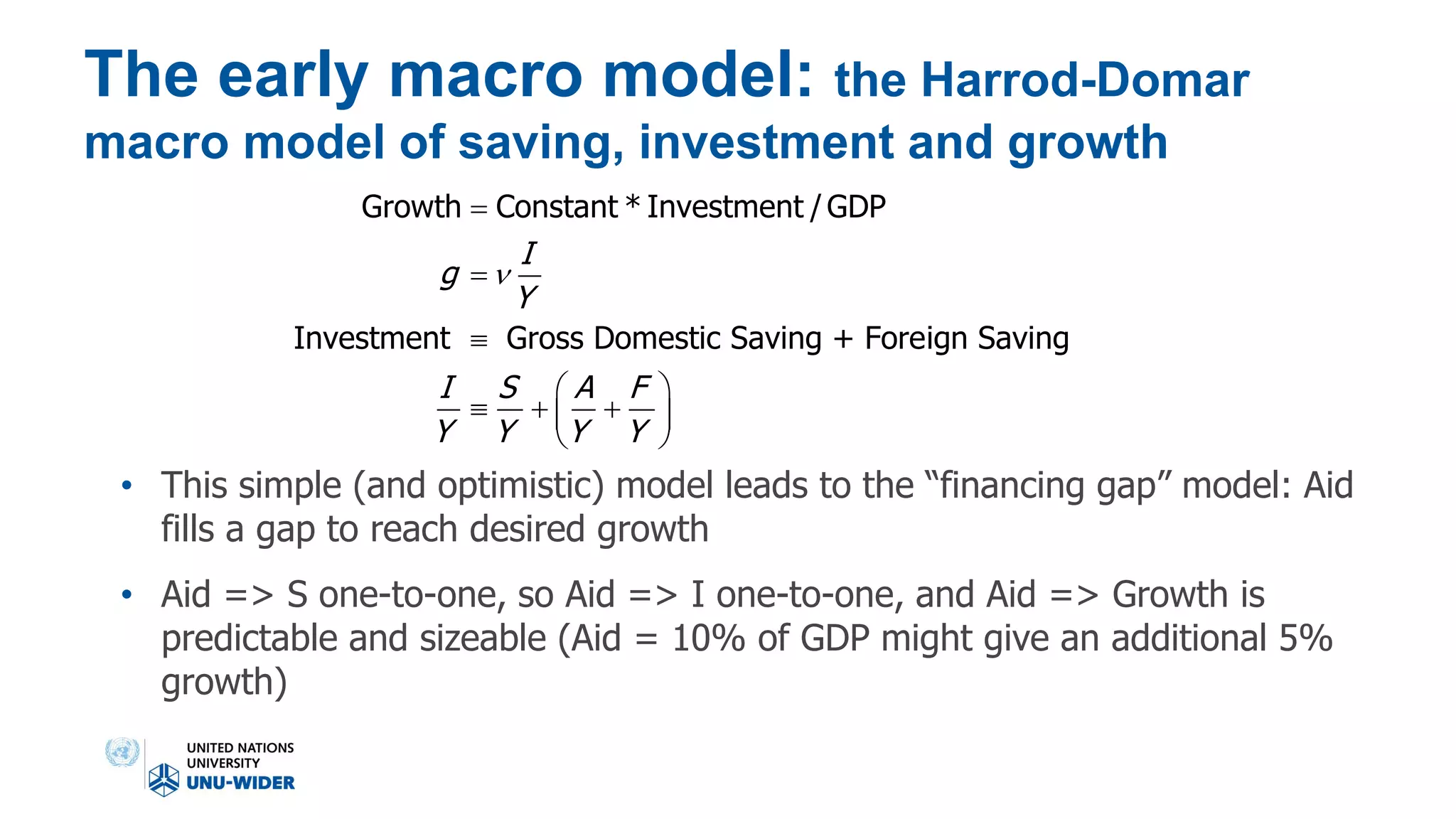
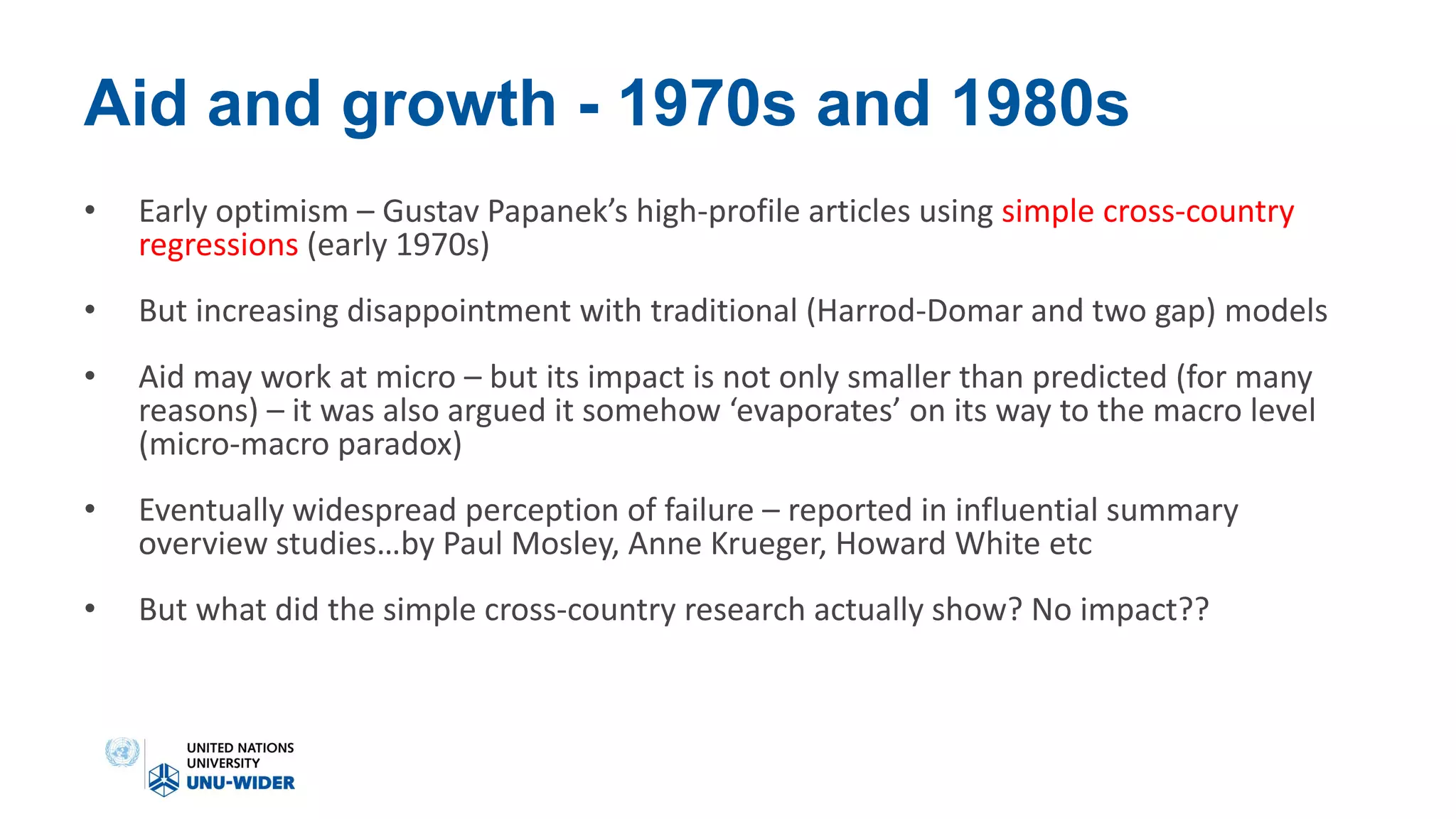
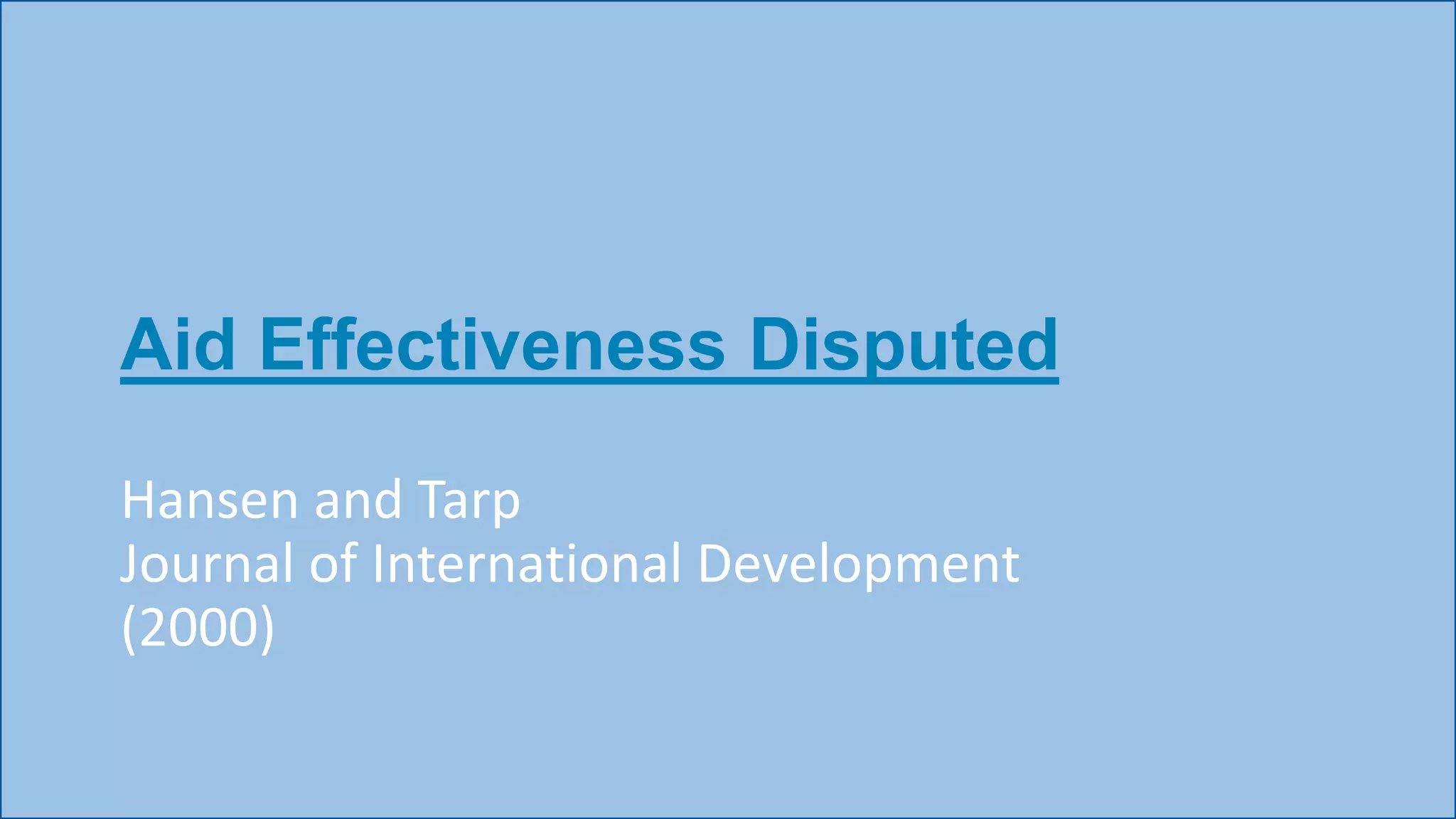
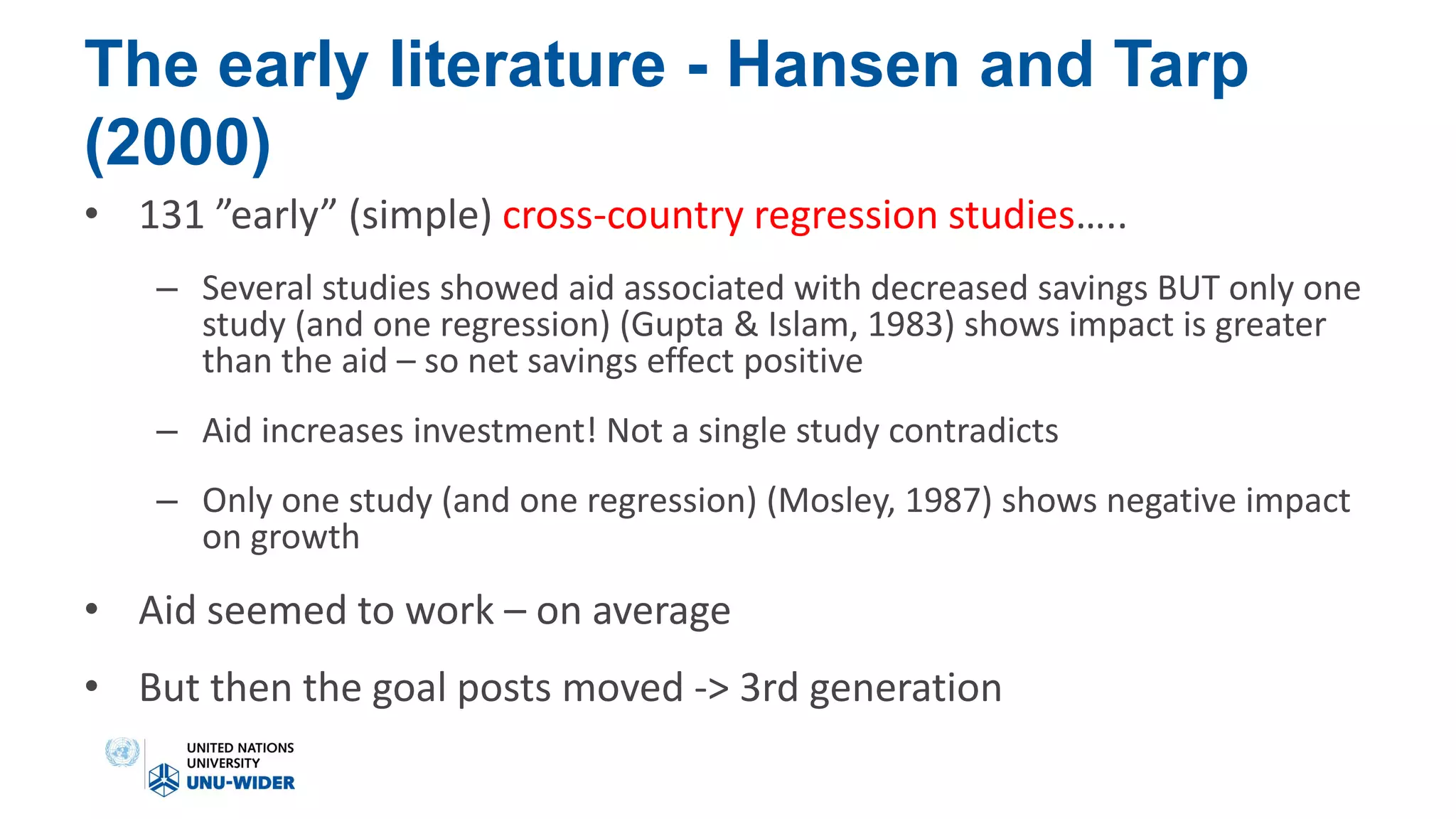

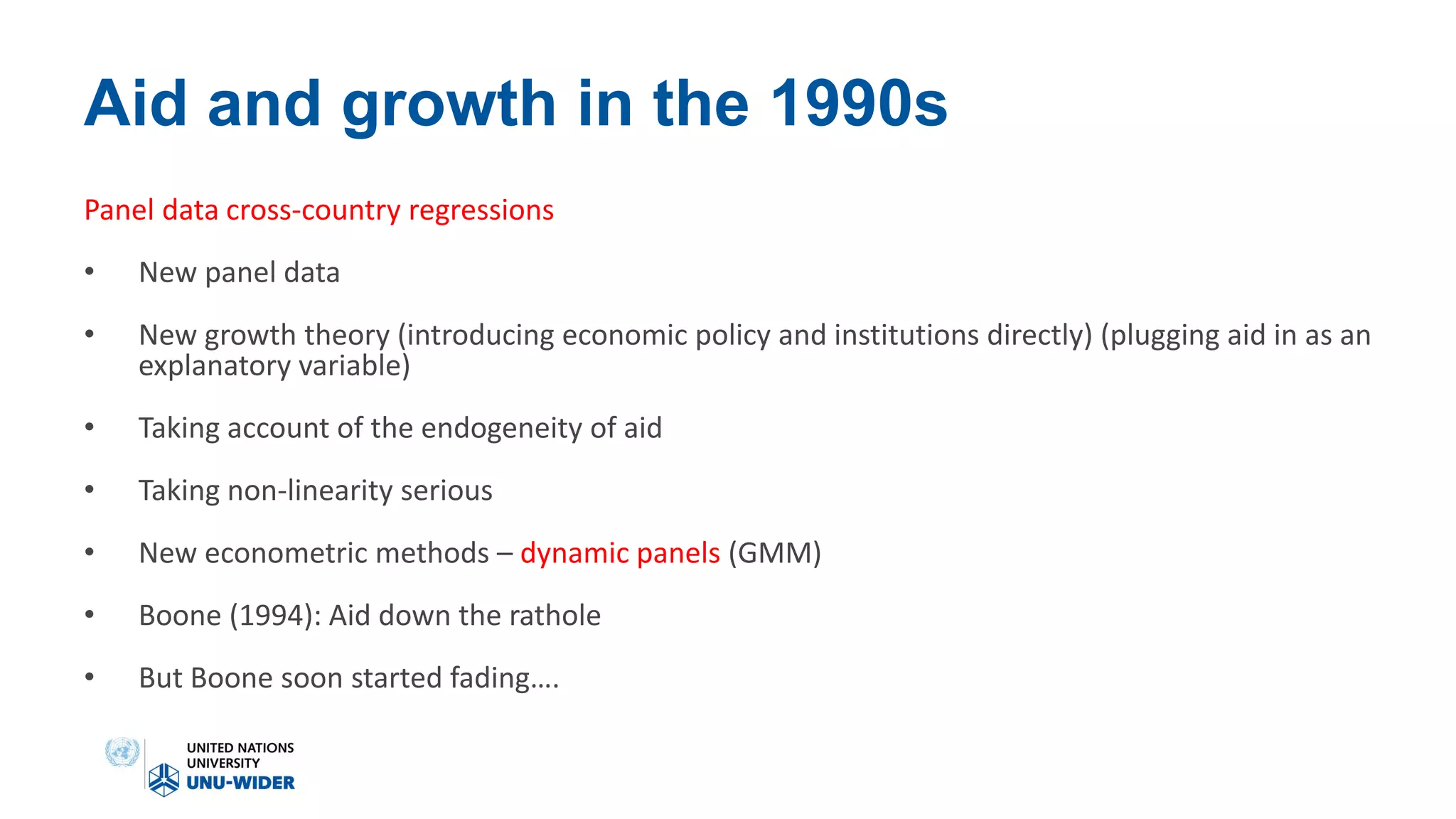
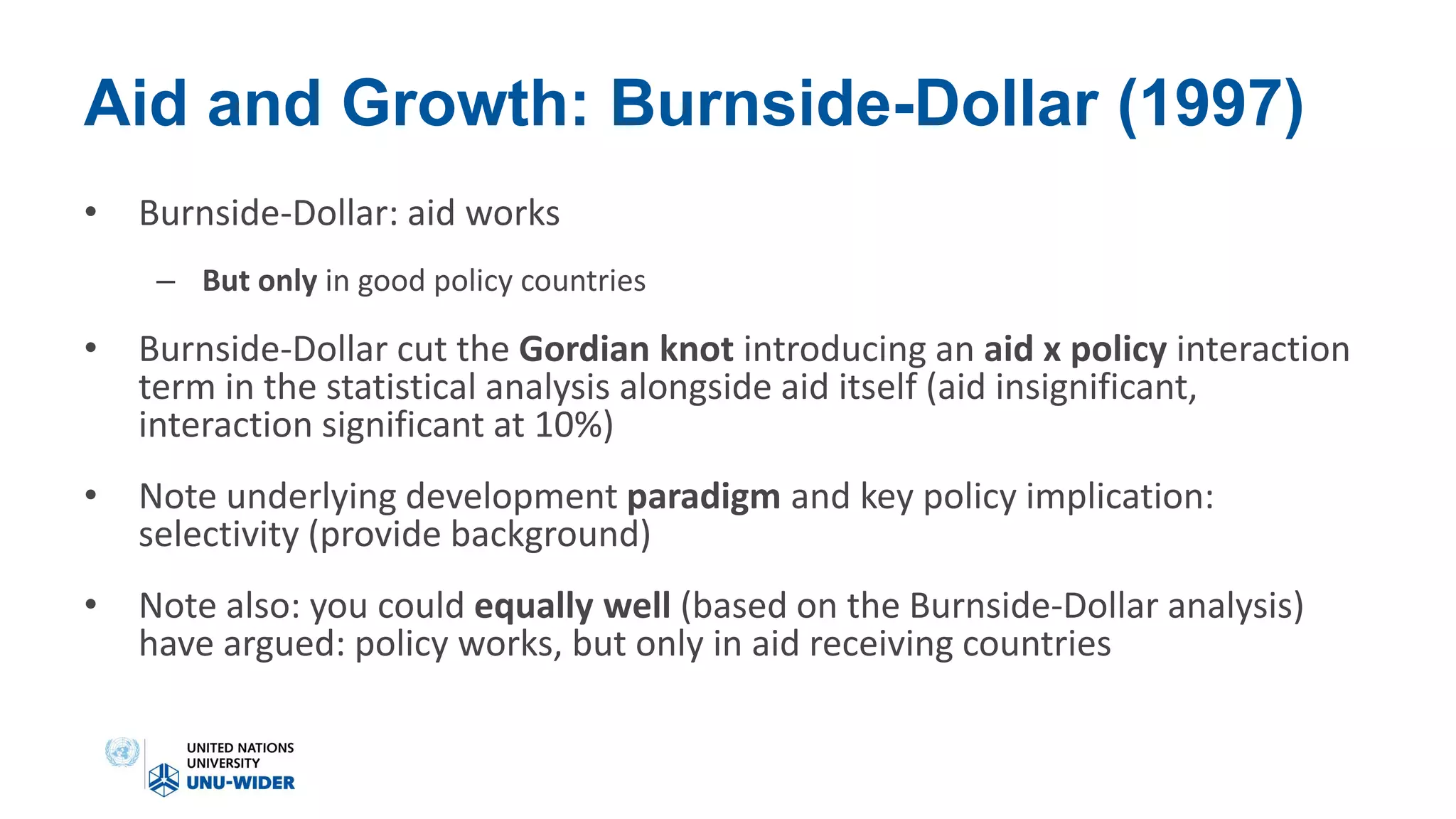

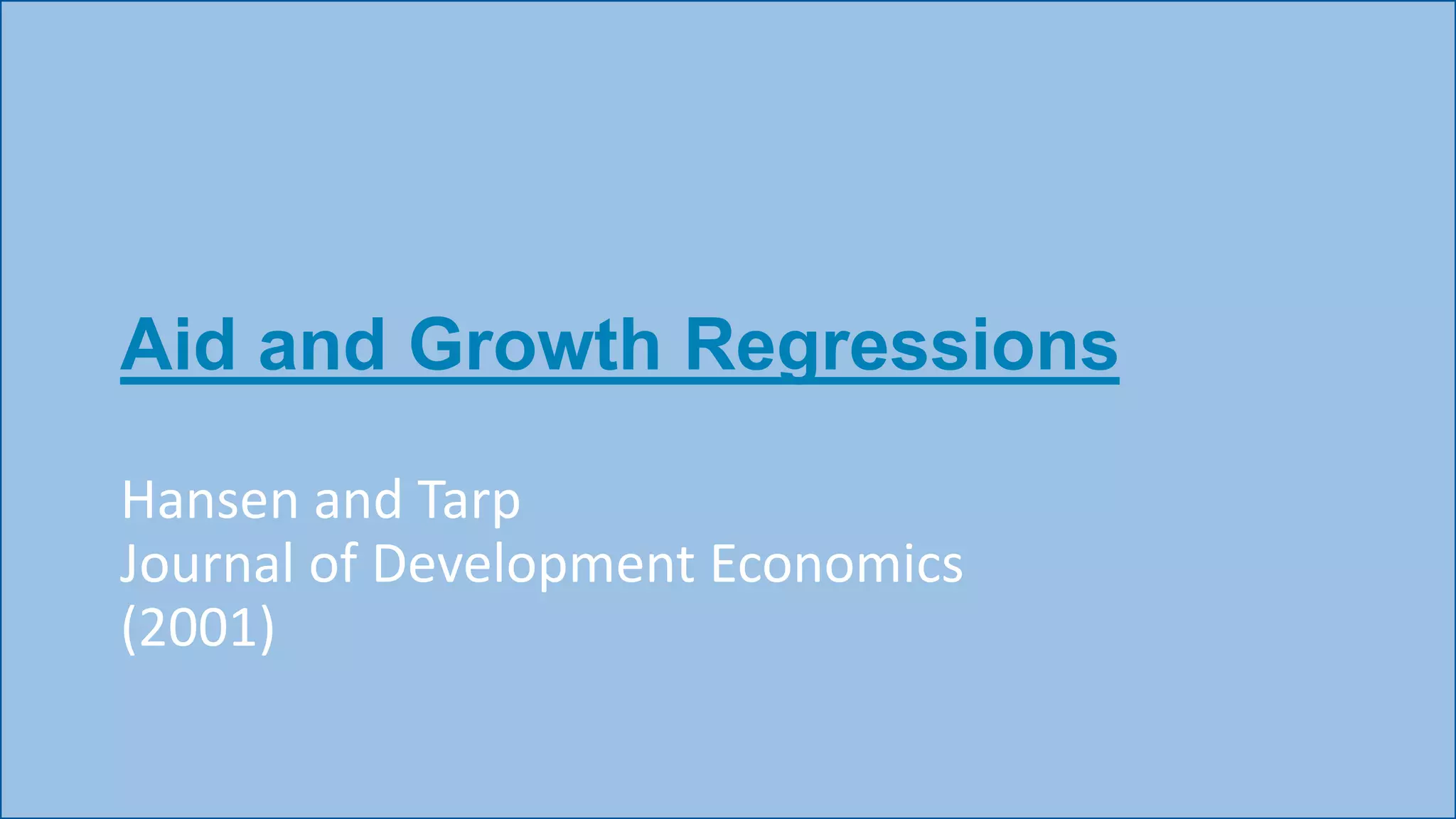

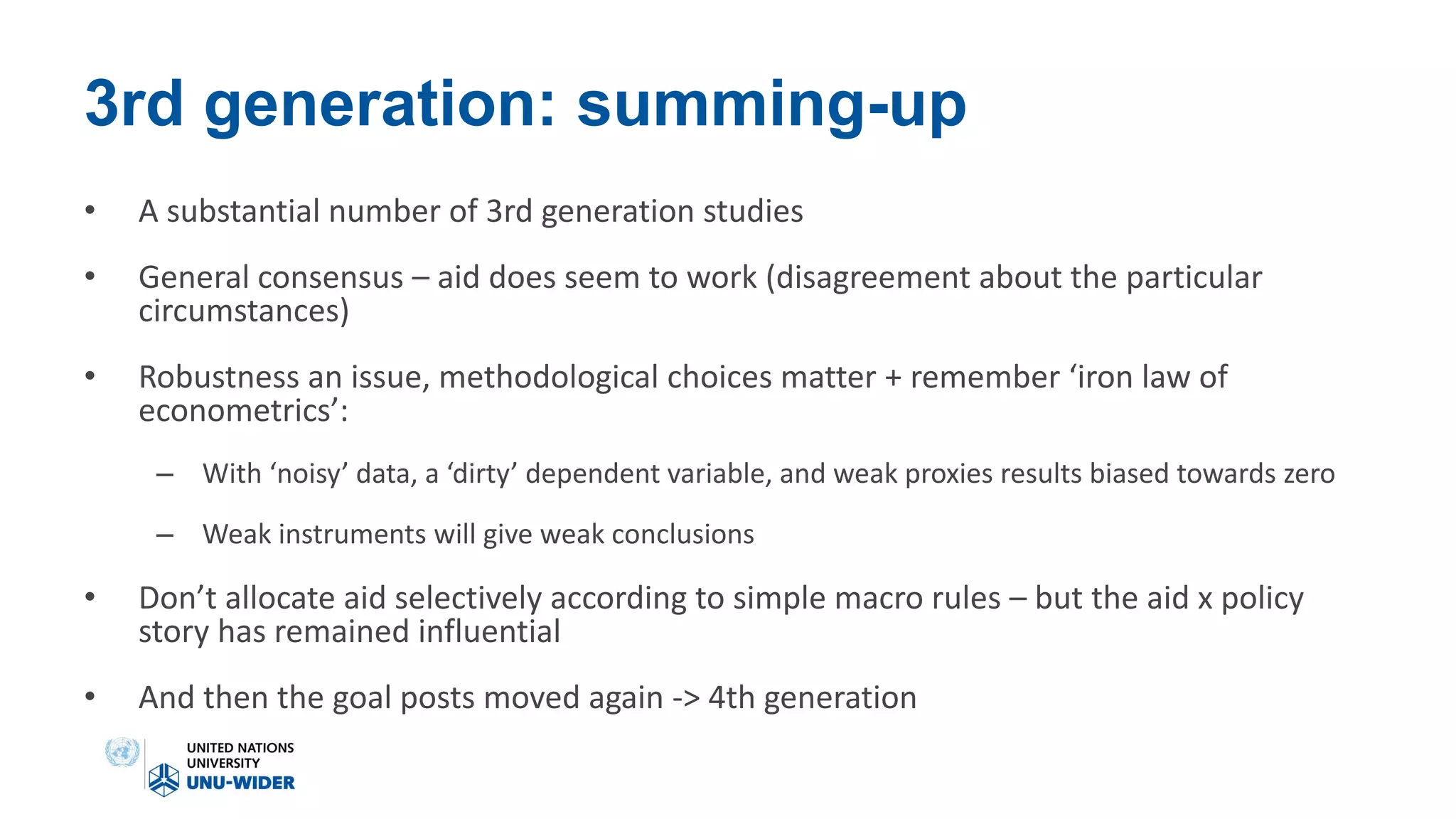
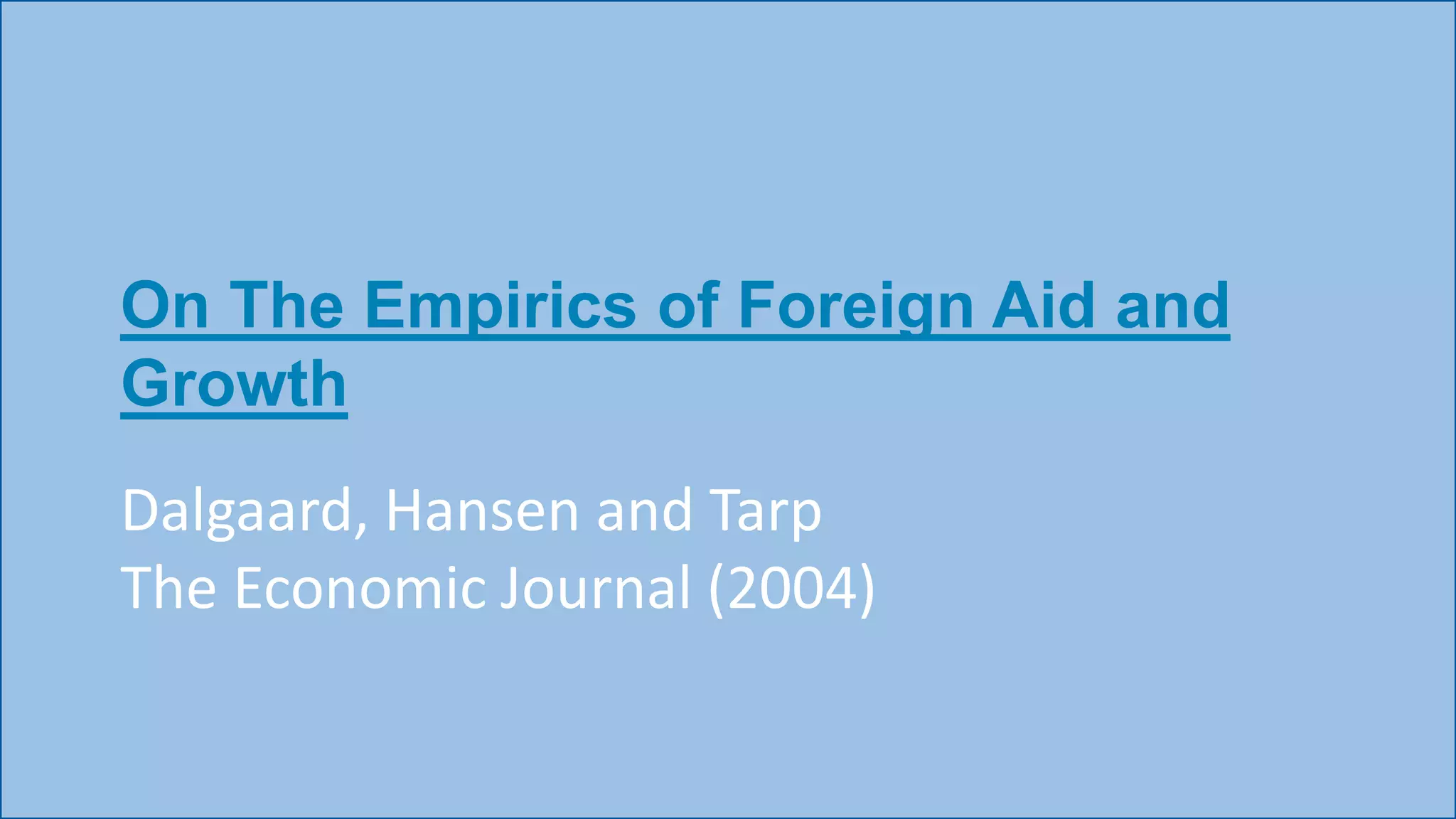
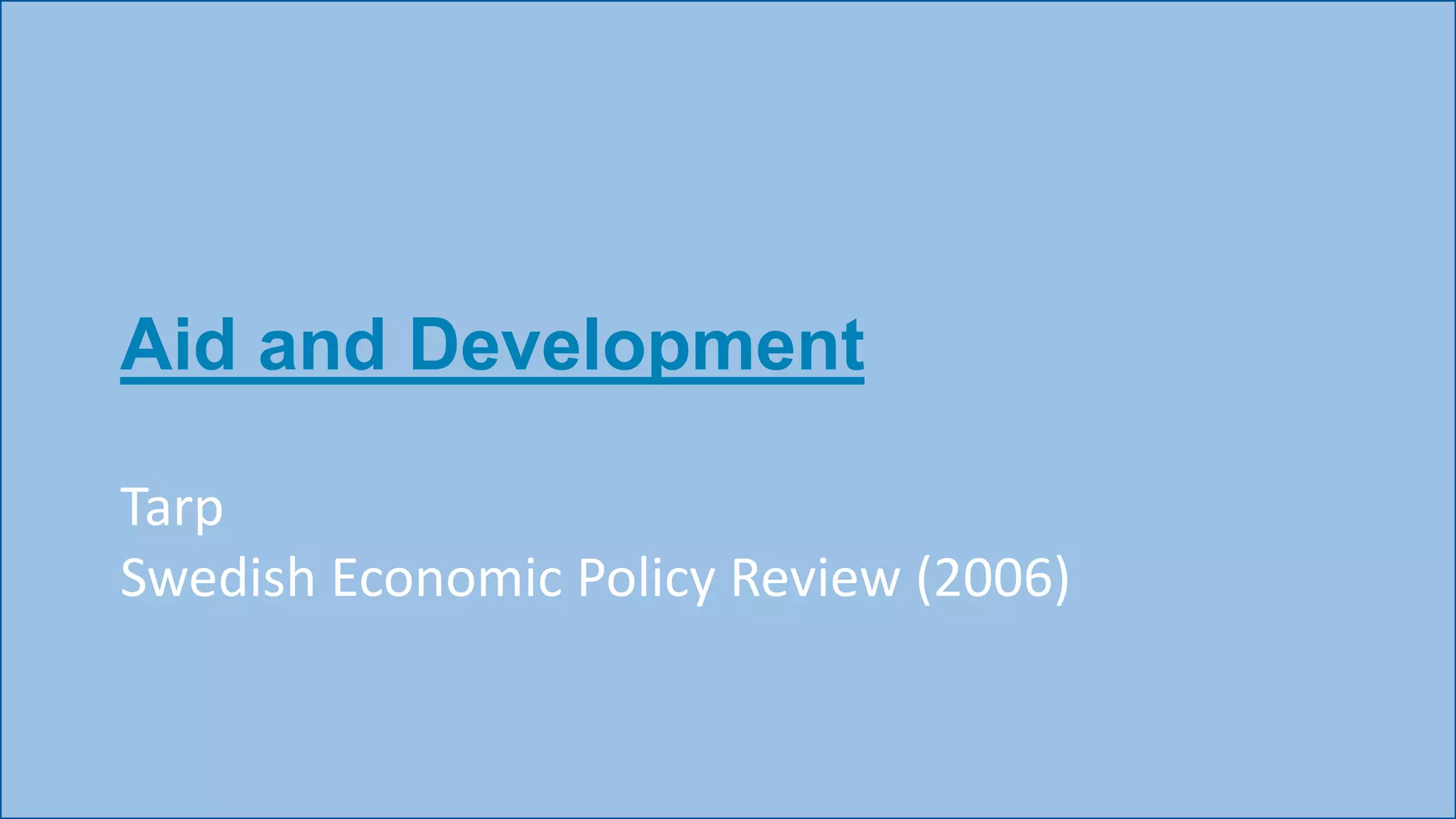
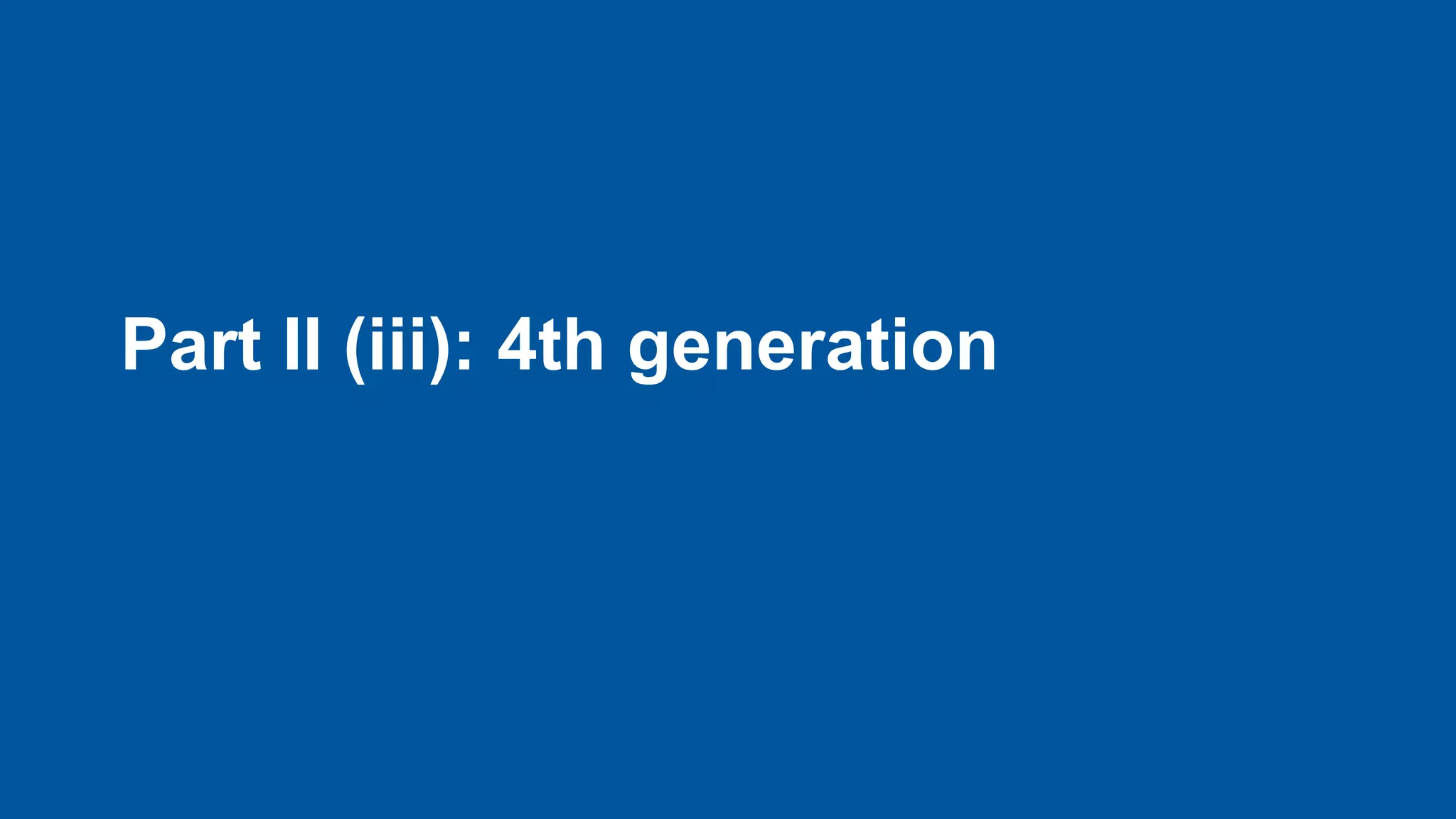
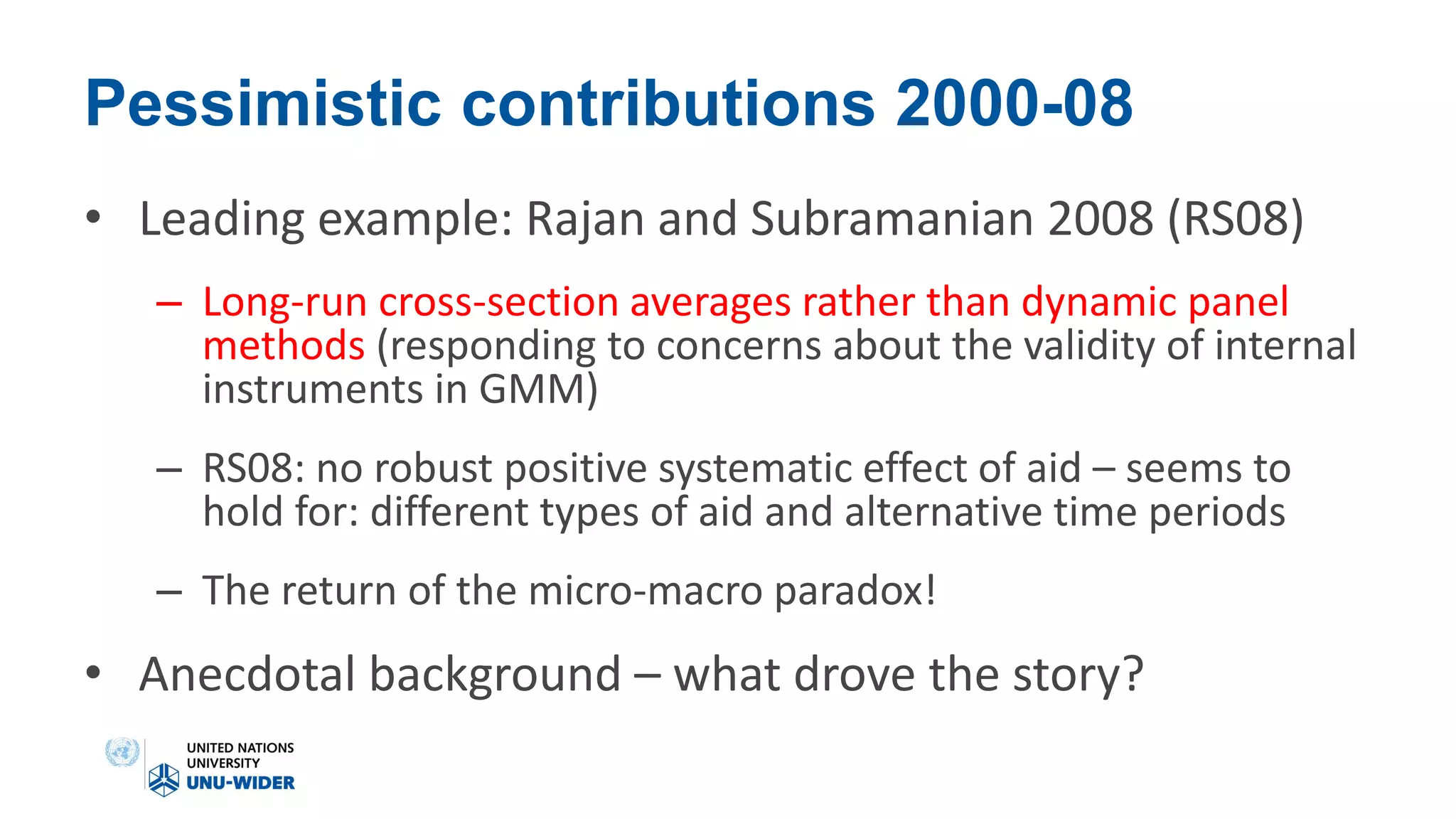
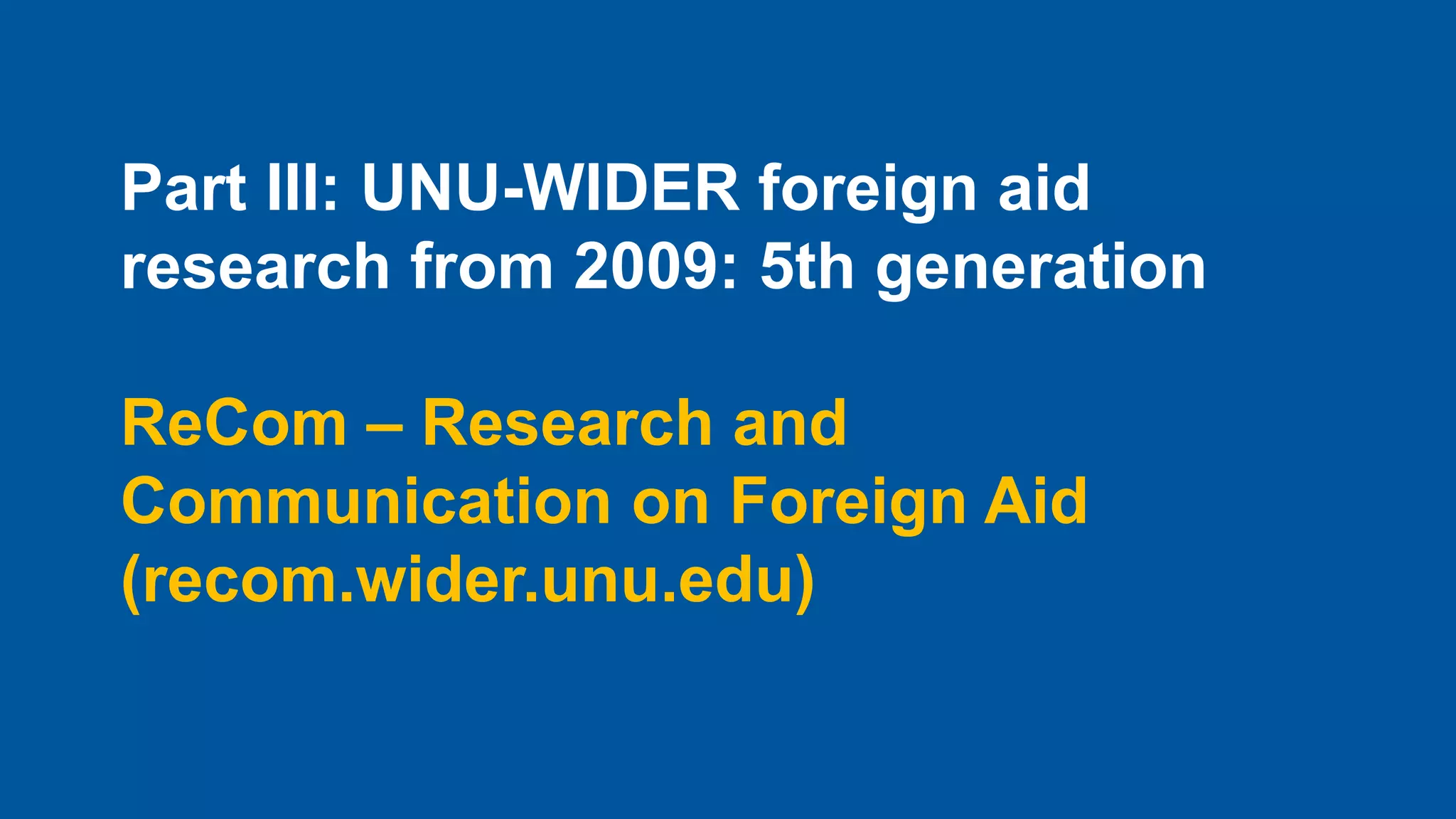

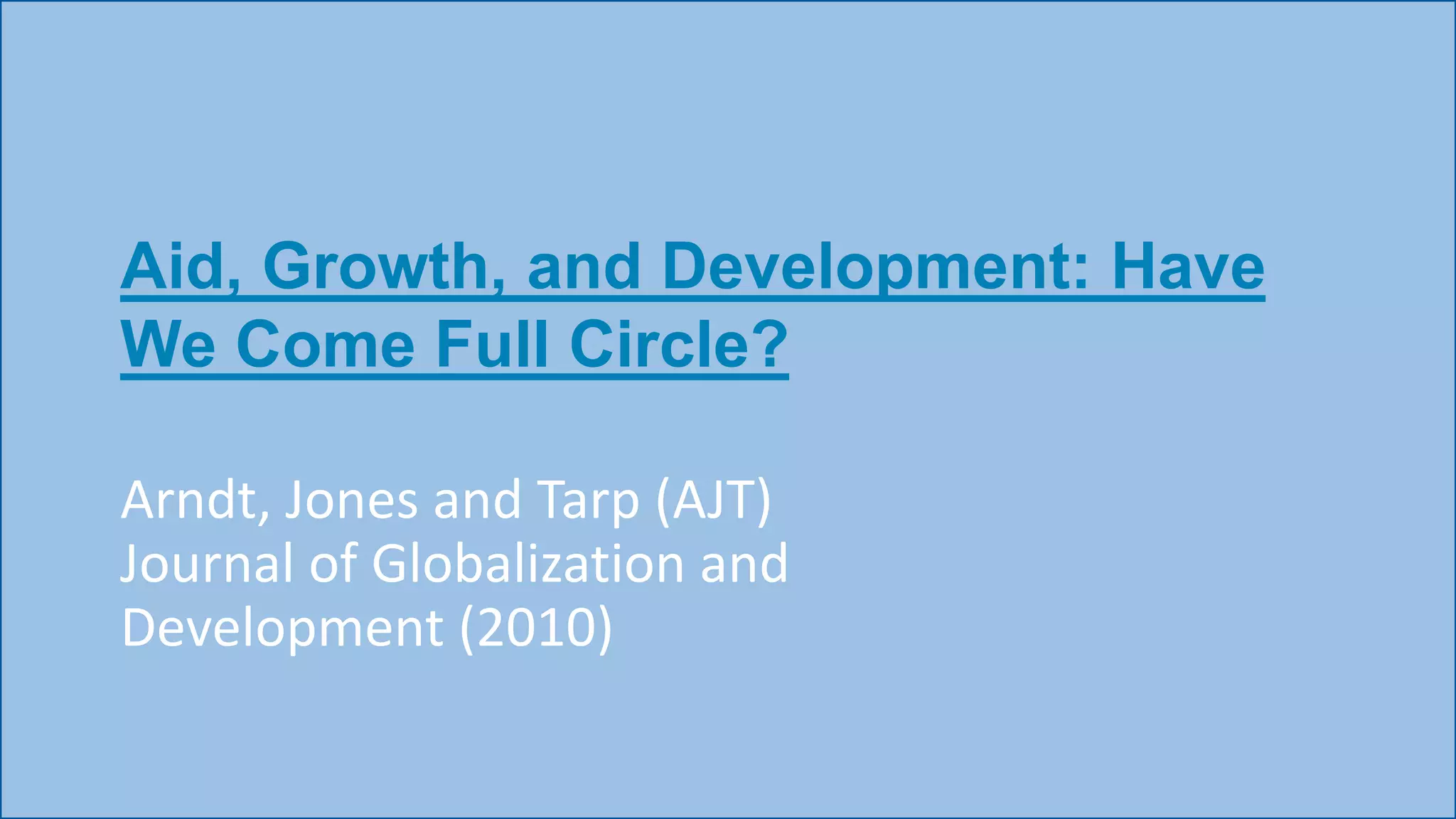


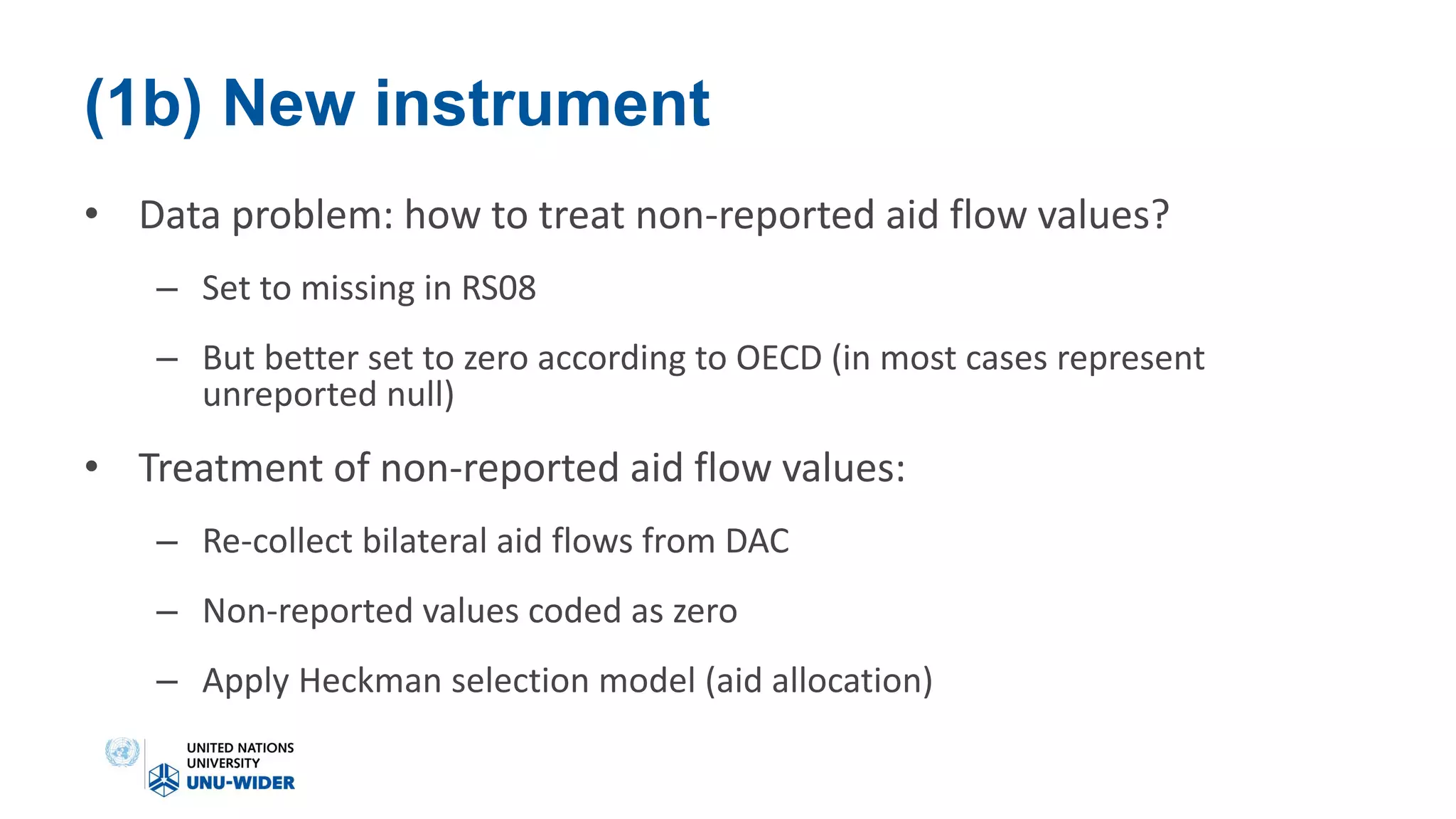
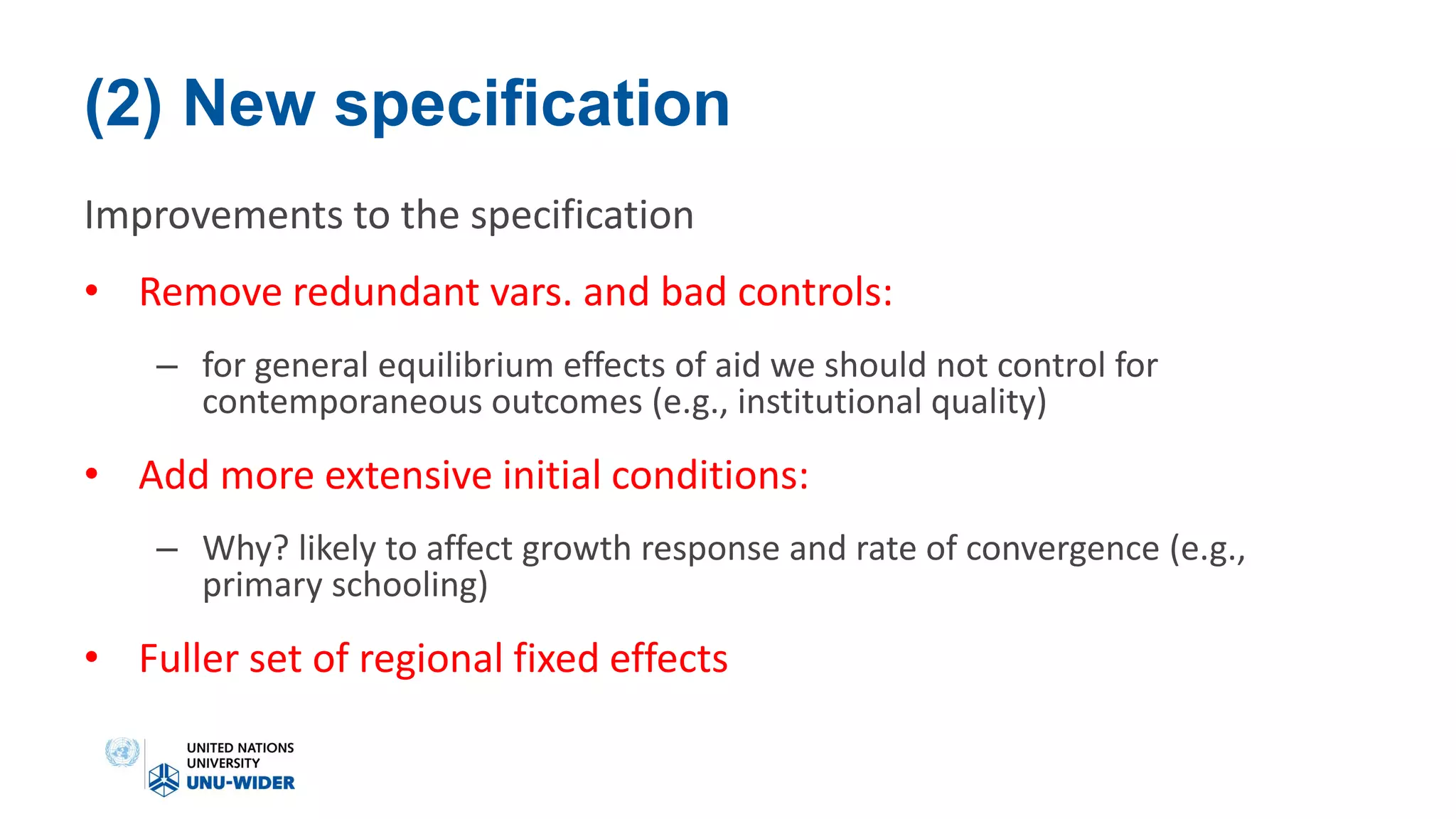
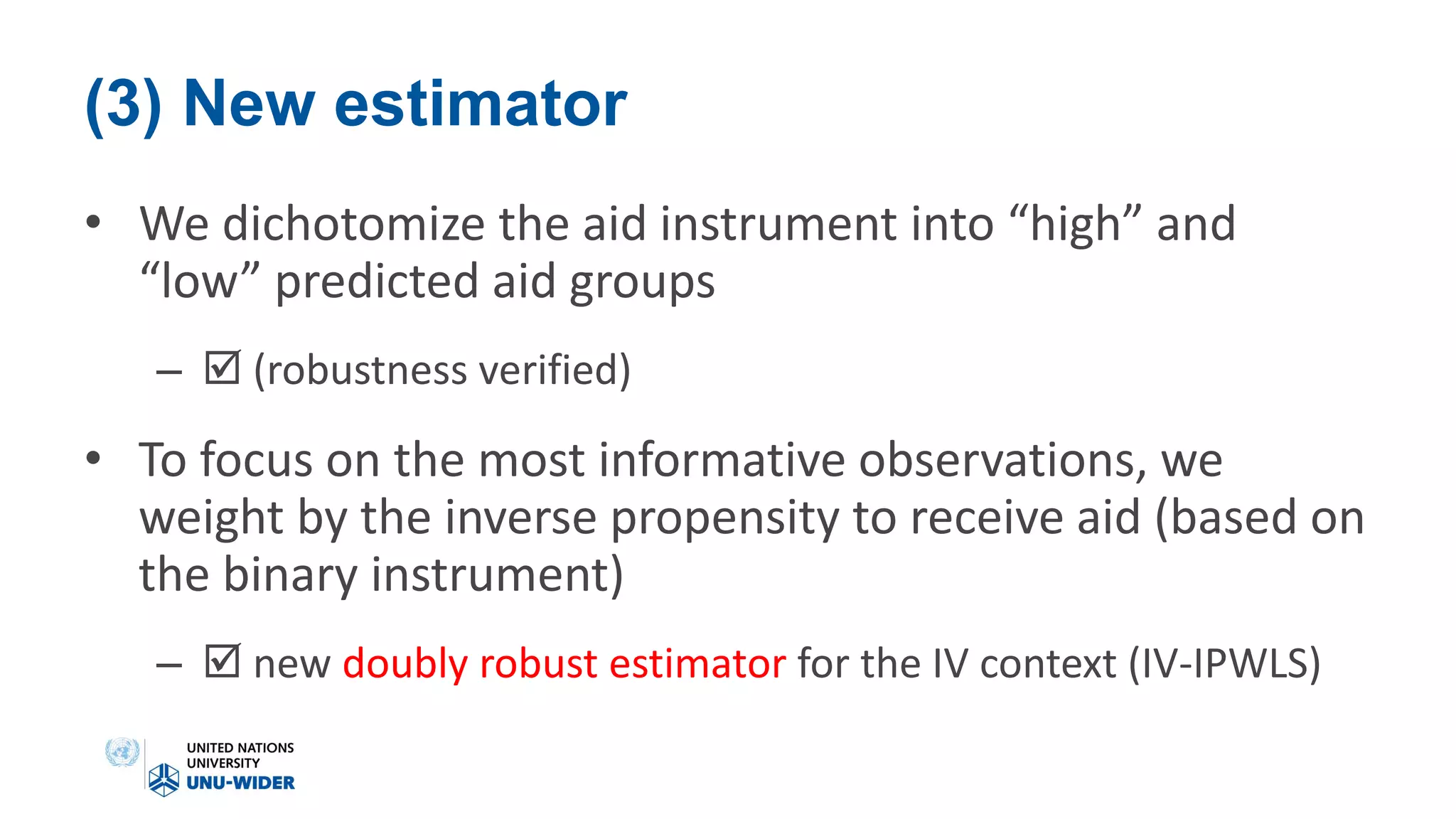
![(1) Results [1970-2000] (H0=0)
Instrument Specification
RS08 AJT
RS08 0.10 0.15*
AJT
RS08
AJT
Estimator
RS08
AJT](https://image.slidesharecdn.com/lecturesorbonne05042018finntarp-180405114929/75/Aid-and-Growth-in-Perspective-Lecture-by-Finn-Tarp-37-2048.jpg)
![(2) Results [1970-2000]
Instrument Specification
RS08 AJT
RS08 0.10 0.15*
AJT 0.10 0.10**
RS08
AJT
Estimator
RS08
AJT
If H0=0.1 then only original RS08 insignificant](https://image.slidesharecdn.com/lecturesorbonne05042018finntarp-180405114929/75/Aid-and-Growth-in-Perspective-Lecture-by-Finn-Tarp-38-2048.jpg)
![(3) Results [1970-2000]
Instrument Specification
RS08 AJT
RS08
AJT
RS08 0.22* 0.21*
AJT 0.25** 0.13**
Estimator
RS08
AJT](https://image.slidesharecdn.com/lecturesorbonne05042018finntarp-180405114929/75/Aid-and-Growth-in-Perspective-Lecture-by-Finn-Tarp-39-2048.jpg)
![Summary results [1970-2000]
Instrument Specification
RS08 AJT
RS08 0.10 0.15*
AJT 0.10 0.10**
RS08 0.22* 0.21*
AJT 0.25** 0.13***
Estimator
RS08
AJT
If H0=0.1 then only original RS08 insignificant](https://image.slidesharecdn.com/lecturesorbonne05042018finntarp-180405114929/75/Aid-and-Growth-in-Perspective-Lecture-by-Finn-Tarp-40-2048.jpg)


